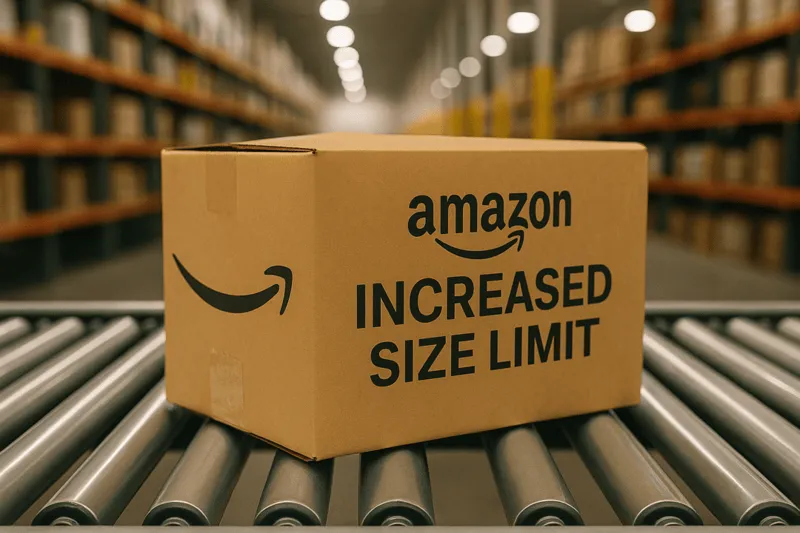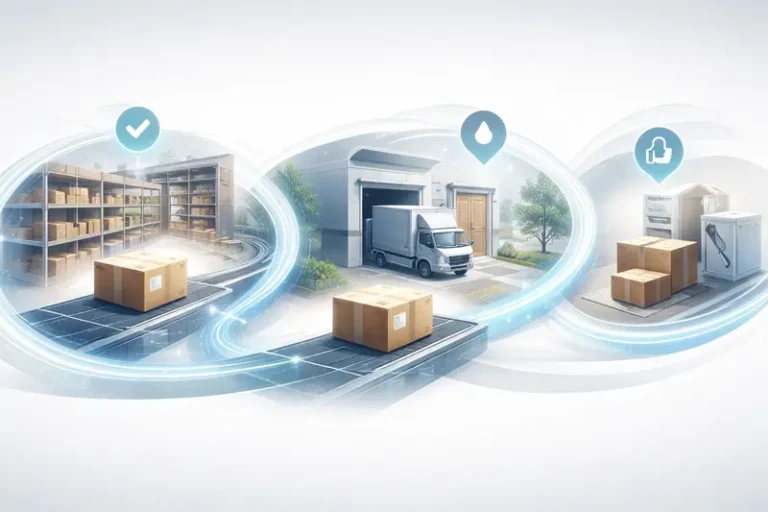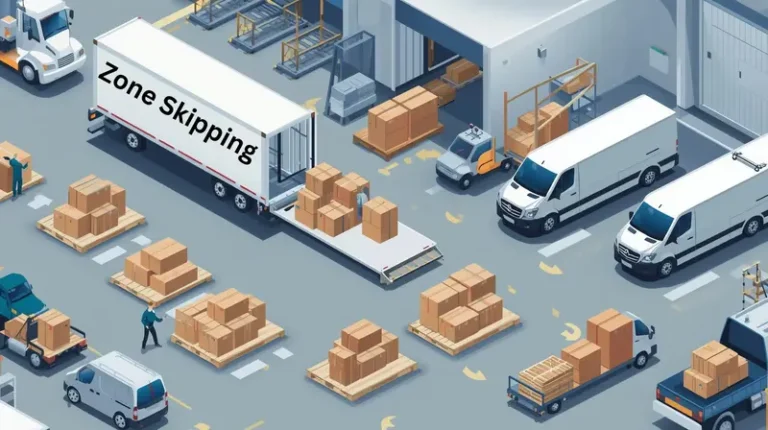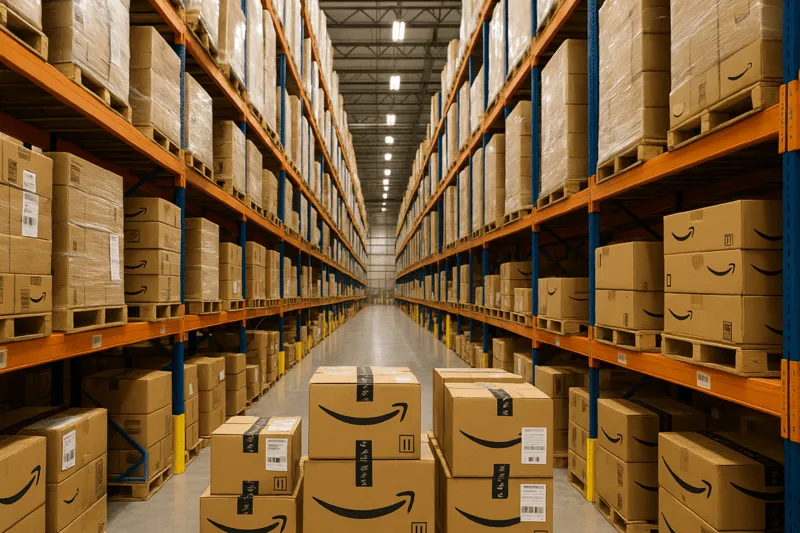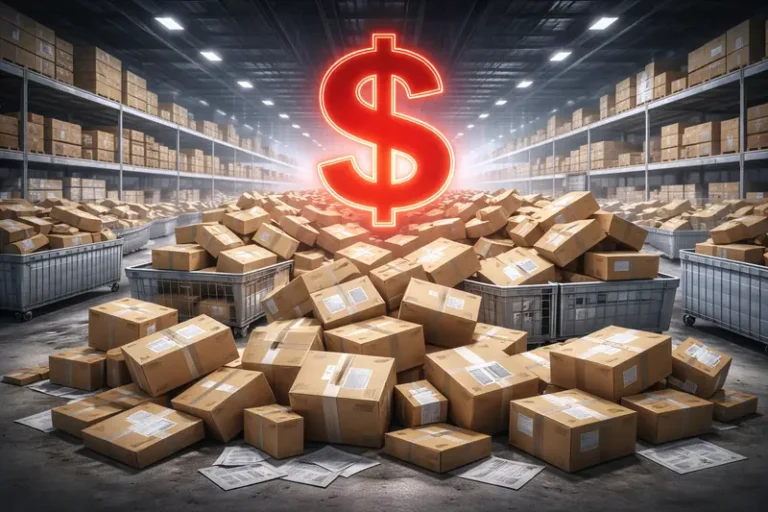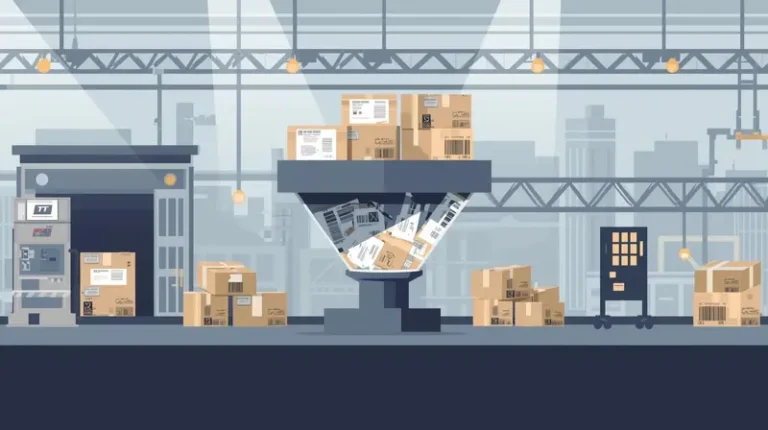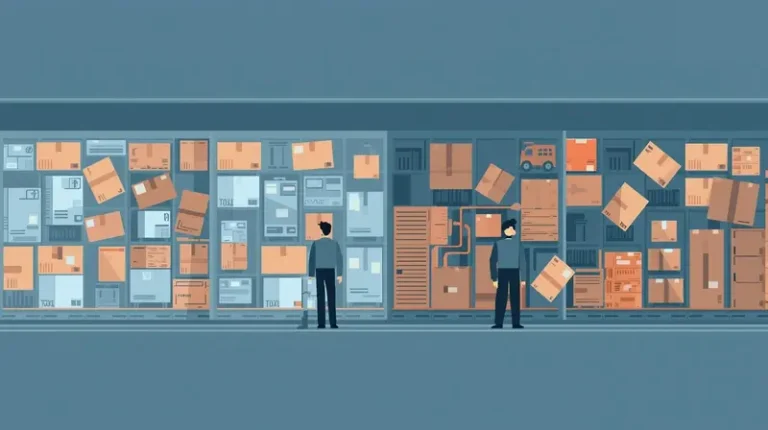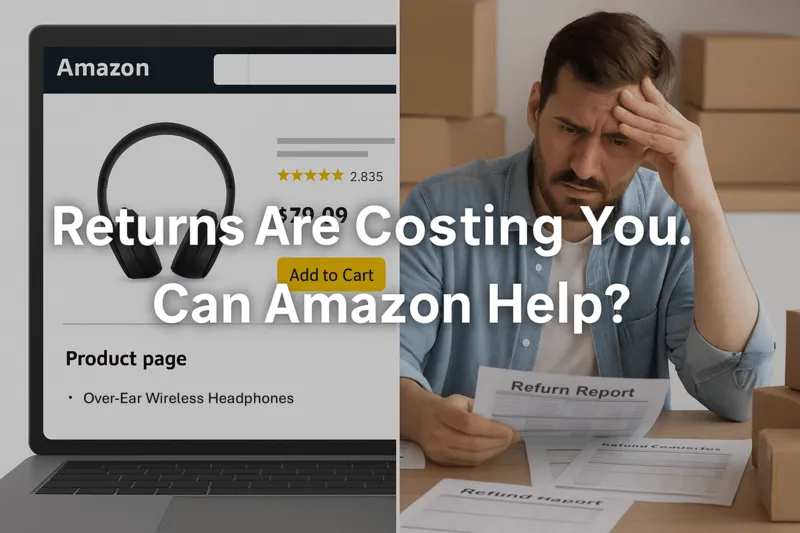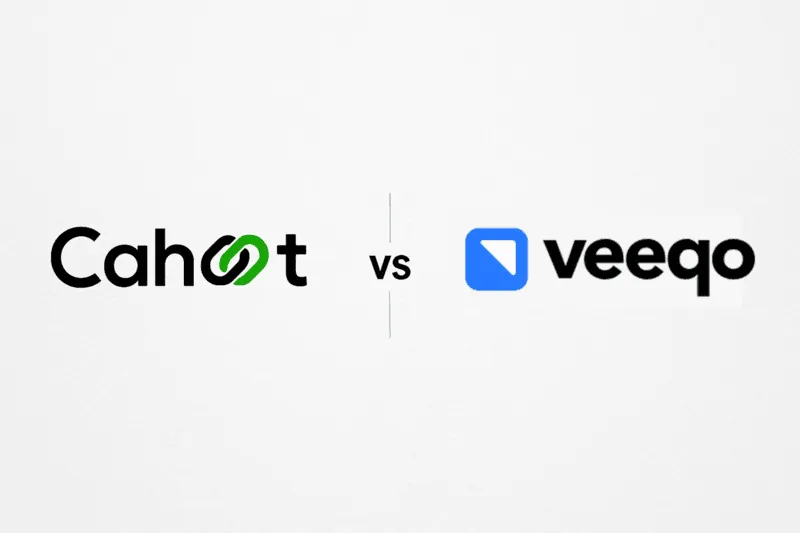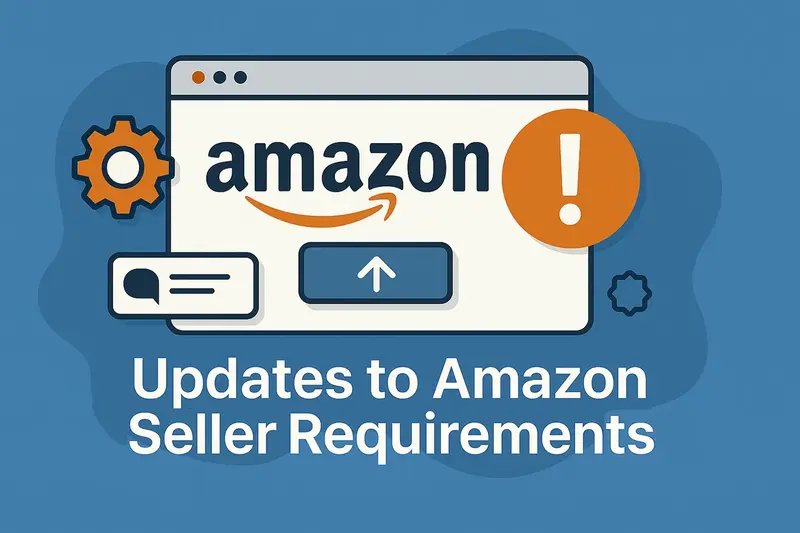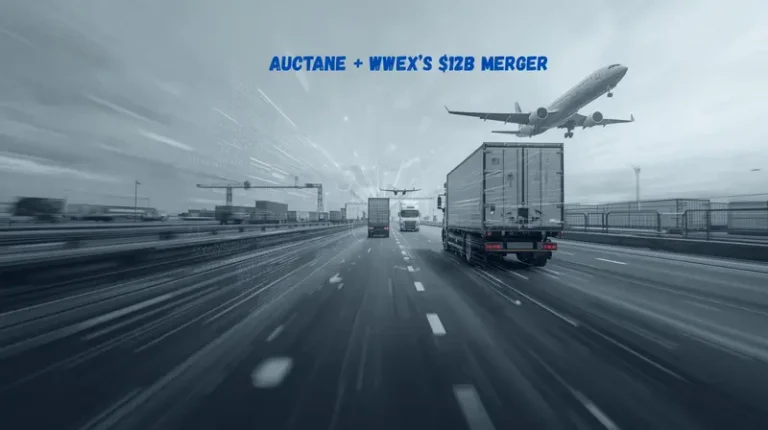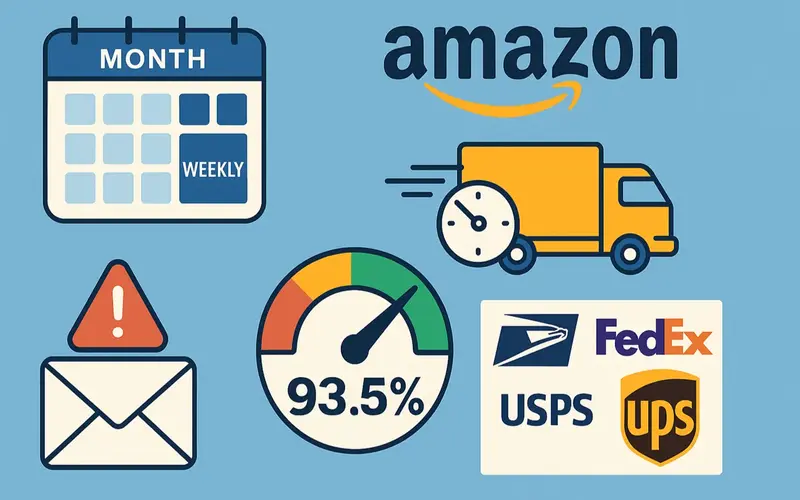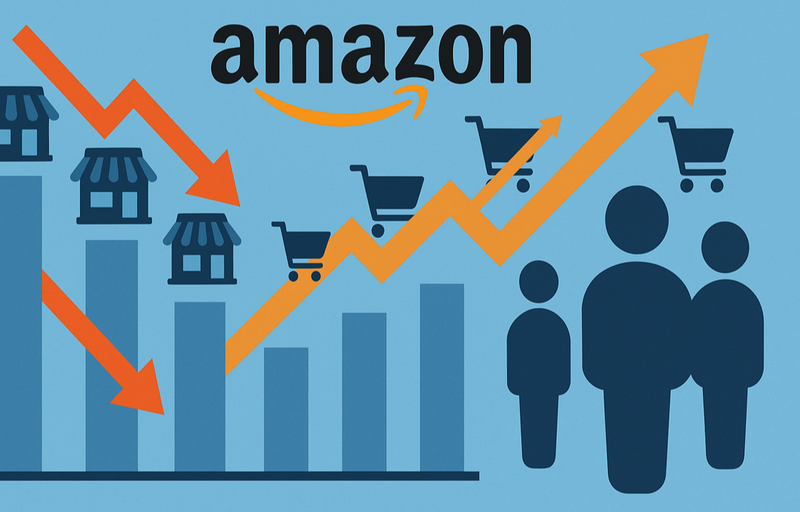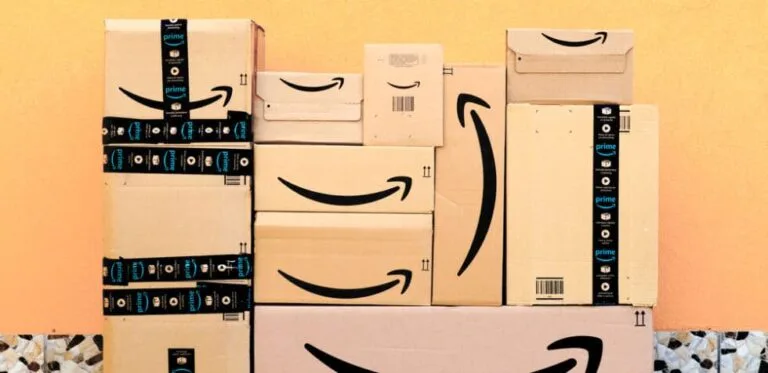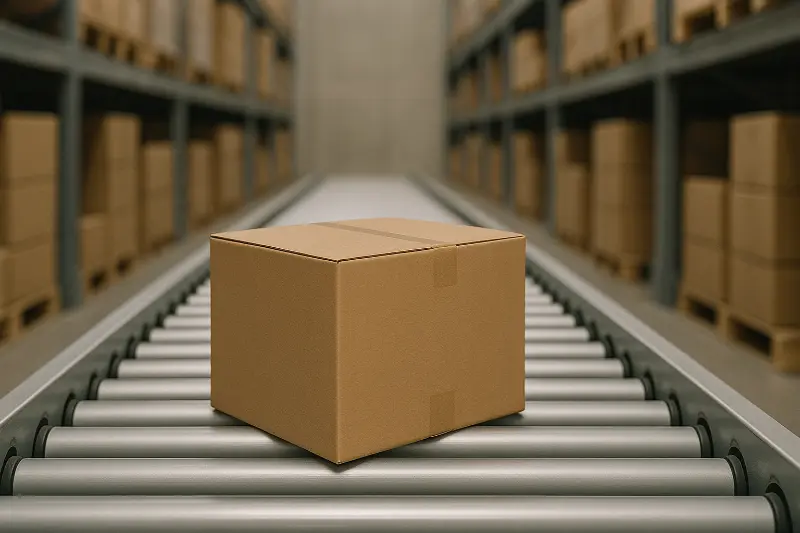Amazon Expands FBA Box Size: What Sellers Need to Know
In this article
 4 minutes
4 minutes
The content of this article covers Amazon’s recent FBA box‐size update, the AWD implications, pros and cons of the change, smart questions to ask, seller feedback, Cahoot’s solution, and FAQs—all in one place.
What Really Changed, and Why It Matters
As of June 20, 2025, Amazon raised the maximum allowable carton length for FBA shipments from 25 inches to 36 inches. Width, height, and the 50-pound weight limit remain unchanged. If you’re wondering whether this move is a big deal, the answer is yes, but with caveats.
This change opens the door for smarter packaging strategies. Think: better product bundling, reduced outer box count, and possibly some cost savings on inbound shipping if you optimize correctly. But before you go redesigning every carton, hold up—this doesn’t necessarily extend to AWD (Amazon Warehousing and Distribution), where size restrictions still apply in most cases.
The AWD Confusion Factor
A lot of sellers on Amazon forums and LinkedIn have been asking: “Does this apply to AWD too?” The short answer is: no, not really. AWD still enforces its own packaging criteria, especially around conveyable cartons. One seller summed it up well: “FBA might let me go long now, but AWD’s still playing by the old rulebook.”
The takeaway? Don’t assume this is a one‐size‐fits‐all update. Multichannel sellers and anyone using AWD for upstream storage should keep using separate carton spec templates.
Slash Your Fulfillment Costs by Up to 30%
Cut shipping expenses by 30% and boost profit with Cahoot's AI-optimized fulfillment services and modern tech —no overheads and no humans required!
I'm Interested in Saving Time and MoneyWhy Amazon Made This Move Now
This isn’t random. 2025 has been packed with changes to FBA and AWD capacity policies, fees, and prep requirements. This latest shift comes after Amazon:
- Reduced peak storage limits to ~5 months of forecasted sales
- Rolled out smart storage rate tiers for AWD
- Cracked down on inventory performance metrics
In that context, the 36-inch change looks less like a gift and more like an efficiency nudge. Amazon wants you to ship smarter, not bigger. But if bigger helps you ship smarter, you now have the green light.
The Pros, and the Not-So-Obvious Cons
The Good:
The Gotchas:
Smart Questions to Ask Right Now
- Which of my ASINs can benefit from the 36-inch allowance?
- Are my 3PLs or prep centers even aware of the change?
- Do I need to maintain separate carton rules for FBA vs AWD?
- Is my packaging team trained to avoid dimensional-weight traps?
What Sellers Are Saying
One seller on the forums wrote, “It’s about time… my standard lamps have been costing me extra for repackaging for years.” Another added, “Unless AWD follows suit, this just adds another layer of complexity.”
We’re seeing the same split across LinkedIn: half of the brands are optimistic, the other half are cautious. Everyone wants more flexibility, but not at the cost of downstream penalties or confusion.
Looking for a New 3PL? Start with this Free RFP Template
Cut weeks off your selection process. Avoid pitfalls. Get the only 3PL RFP checklist built for ecommerce brands, absolutely free.
Get My Free 3PL RFPCahoot’s Edge: No Length Caps, No Guesswork
Here’s where we come in. At Cahoot, we don’t impose arbitrary box-length limits. Whether you ship 12 inches or 42 inches, our peer-to-peer fulfillment network accommodates your carton, not the other way around.
And because we operate channel-agnostic, there’s no need to split inventory or set up redundant prep processes just to comply with Amazon’s shifting rules. When Amazon changes the rules, we don’t scramble. Our systems are already built for flexibility.
Final Thought
Amazon’s carton-length change is an opportunity, if you know how to use it. It’s not a magic solution, but for the right SKUs, it can open up serious efficiency. Just make sure your fulfillment strategy isn’t relying on assumptions. Because at Amazon, the rules always change.
Frequently Asked Questions
What’s the new FBA box length limit?
The new maximum is 36 inches in length. Weight (50 lbs max), width, and height restrictions remain the same.
Does this apply to Amazon AWD?
No. AWD still enforces a 25-inch limit for conveyable cartons. Check your spec sheets before making changes.
Will this reduce shipping costs?
It can, especially if you bundle multiple units in one carton. But watch for dimensional weight traps.
Can Cahoot handle boxes over 36 inches?
Yes. Cahoot imposes no size limits on cartons, making it ideal for larger or irregularly shaped products.
Do I need to update my packaging workflows?
Probably. Most sellers will benefit from revisiting their pack plans and checking how their software handles the new dimensions.
Turn Returns Into New Revenue
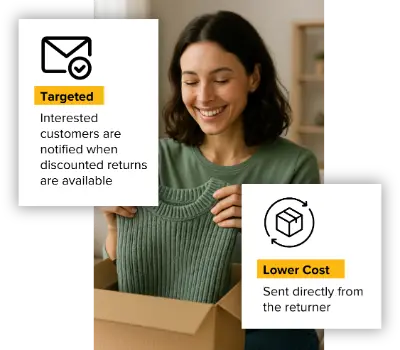
Amazon AWD: Benefits and Disadvantages of the Warehousing and Distribution Bulk Storage Solution
If you’re an Amazon seller using FBA, you’ve probably experienced the stress of storage limits, seasonal fee spikes, or juggling inventory across warehouses. Amazon heard those pain points and introduced a relatively new program called Amazon Warehousing & Distribution (AWD). AWD functions as both a distribution service and a distribution program, streamlining inventory storage, automatic replenishment, and multichannel distribution for sellers by leveraging Amazon’s extensive logistics network. It’s essentially Amazon saying, “Hey seller, let us store your extra stuff cheaply and we’ll feed it into FBA (or even ship it elsewhere) whenever you need.” In theory, it sounds like a dream: low-cost bulk storage with Amazon’s logistics muscle behind it, and many sellers are super excited about the potential of AWD to solve long-standing inventory challenges. But is Amazon’s warehouse-and-distribute service all sunshine and rainbows? As with any solution, there are pros and cons to weigh. Let’s break down exactly what AWD is and the key benefits and disadvantages of using it for your ecommerce business.
What is Amazon AWD?
Amazon Warehousing & Distribution (AWD) is a service Amazon launched to provide low-cost bulk storage and inventory distribution for sellers. Think of it as a stage before FBA. You send a large chunk of inventory to Amazon’s AWD storage facilities (which are more like traditional warehouses, optimized for cost-efficient storage). Sellers send inventory to AWD using their preferred shipping method, such as box loads or palletized loads, and the choice of shipping method can impact transportation fees, which are calculated based on specific parameters. For AWD inbound, sellers can use Amazon Global Logistics or the Partnered Carrier Program to facilitate inbound shipments, often benefiting from cost savings and logistics support. From there, Amazon can automatically replenish your stock into various FBA fulfillment centers as needed, or even fulfill orders for other channels. Using Amazon’s partnered carriers can provide integrated rates and additional cost savings for transportation. In Amazon’s own words, “Amazon Warehousing and Distribution (AWD) is a low-cost bulk storage solution that distributes your inventory to the Amazon store and non-Amazon sales channels.” AWD is fully integrated with FBA; in fact, AWD covers your FBA inbound shipping as part of its service, essentially acting as a backstop to keep your FBA inventory in stock. Amazon’s managed service also offers discounted transportation rates and auto-replenishment, simplifying supply chain operations for sellers.
AWD is part of the broader Amazon fulfillment and Amazon fulfillment network, which streamlines storage, shipping, and inventory replenishment across multiple platforms. Inventory is stored at an Amazon fulfillment center, where Amazon personnel manage inventory storage, oversee warehouse operations, and provide real-time inventory data for sellers. Inventory may be distributed to multiple fulfillment centers, and AWD can split shipments across these centers to improve delivery speed and efficiency. When inventory is moved and replenished, master case handling supports efficient multi-channel distribution and reduces safety stock requirements. Inventory in AWD and FBA is stored differently, with each system optimized for its specific storage and management needs.
Slash Your Fulfillment Costs by Up to 30%
Cut shipping expenses by 30% and boost profit with Cahoot's AI-optimized fulfillment services and modern tech —no overheads and no humans required!
I'm Interested in Saving Time and MoneySo, instead of you renting a 3PL warehouse or stuffing your garage with extra product, Amazon will hold it for you at an AWD center for a monthly fee per cubic foot (which we’ll get into). Storage and transportation fees are calculated based on the cubic feet of inventory stored or moved, and are calculated based on factors like shipping distance, weight, and method. Inventory storage is a key component of AWD, offering low-cost, long-term storage and efficient distribution to various sales channels. When your FBA stock gets low, Amazon’s systems can auto-replenish from your AWD inventory, meaning they’ll move units from the bulk storage to active FBA fulfillment centers, so you (hopefully) never run out of stock on the digital shelf. The process of moving inventory from AWD to FBA involves creating an FBA shipment and following the associated steps for preparation and dispatch. And if you have inventory there and you make a sale on another platform (say your Shopify store), Amazon can ship it from AWD to the customer; this is part of the “distribution to non-Amazon channels” promise, supporting various distribution channels and enabling multi-channel distribution for sellers.
Managing AWD is done through your Seller Central account, where you can use the AWD page to enroll, create shipments, and oversee inventory. You can track shipments and track replenishments directly within Seller Central, ensuring smooth inventory flow and order status updates.
In short, AWD is Amazon acting as your warehouse and distribution hub, not just a fulfillment center for each individual order. It’s like creating a two-tier inventory system: Tier 1 is AWD for cheap long-term storage, Tier 2 is FBA for fast order fulfillment.
With the definition out of the way, let’s dive into the benefits of Amazon AWD, followed by the disadvantages or limitations to consider.
Benefits of Using Amazon AWD
1. Lower Storage Costs (Especially for Long-Term): Storage fees in AWD are significantly cheaper than standard FBA storage fees. Amazon advertises simple pay-as-you-go pricing around $0.42–$0.48 per cubic foot per month for base storage. AWD cost is structured with two tiers: a base rate applies if you provide your own shipping, while integrated rates are available when using Amazon’s partnered carriers like AGL or PCP. That’s roughly half or even a third of what FBA might charge during peak season (Q4 FBA storage for standard items can be $2.40 per cubic foot/month!). Plus, there are no additional costs or hidden fees beyond the basic charges for inventory storage and shipping. No seasonal surcharges; AWD’s rate is steady year-round, and there are no extra fees during the holiday season, unlike some other services. For sellers, this means you can stock up on inventory (for example, buying in bulk or manufacturing larger batches for cost savings) and park the excess in AWD without hemorrhaging money in storage fees. It’s designed for bulk, long-term storage, so it’s ideal if you have, say, six months of inventory but only two months can comfortably sit in FBA before incurring long-term fees. With AWD, you reduce those dreaded aged inventory surcharges because you won’t leave items in FBA for 12+ months, and you keep the overstock in AWD until needed.
2. Automatic FBA Replenishment (Never Go Out of Stock): Perhaps the biggest operational perk is auto-replenishment. Amazon uses a data model to monitor your FBA inventory levels and will proactively transfer stock from AWD into FBA fulfillment centers to meet demand. Even during busy seasons, they claim that inventory in AWD is considered “in stock” and buyable, because they’ll make sure it flows into FBA as needed. This is huge for avoiding stockouts. If you’ve ever had Amazon limit your FBA restock quantities, you know the pain of inventory capped during a surge in sales. With AWD, anything sitting in their bulk storage doesn’t count against your FBA storage limits. They can drip-feed it in as you sell through, effectively giving you elasticity in inventory. Think of AWD as a buffer; you keep selling, Amazon keeps your Prime-ready stock topped up from the reserve. No frantic monitoring of FBA stock and emergency shipments; it’s more “set it and let Amazon manage it” for replenishment. This can also potentially allow you to take advantage of manufacturing economies (producing larger quantities less frequently) without risking long out-of-stock gaps.
3. Simplified Inbound Logistics (Amazon Handles Distribution): When you send a shipment to AWD, Amazon will handle distributing that inventory to various fulfillment centers when the time comes. That means you might avoid the hassle of creating multiple FBA inbound shipments to different FCs or paying extra for Amazon’s Inventory Placement Service. AWD pricing includes FBA inbound placement, so you send it all to one AWD warehouse, and Amazon moves it internally to where it needs to go for fulfillment. This can save on transportation costs and complexity. Amazon likely uses its network of trucks, and possibly its partnered carriers at negotiated rates, to shuttle goods around. For sellers, that’s less micromanagement. It also could mean if you have a product that will eventually need to be in, say, East Coast and West Coast fulfillment centers, you can just send a big pallet to one place (perhaps closer to your supplier or port to minimize your freight cost) and Amazon will later distribute to multiple centers. It’s a more streamlined operation for you.
4. Multi-Channel Fulfillment from One Pool: Because Amazon AWD can also serve non-Amazon channels, you don’t have to split inventory for different sales platforms. For example, without AWD, you might keep some stock in FBA for Amazon sales and other stock in a 3PL or your own warehouse for, say, your website orders or Walmart Marketplace. With AWD, you could, in theory, put all inventory in Amazon’s warehouse and fulfill all orders from there. Amazon explicitly says you can “expand to non-Amazon sales channels quickly and easily” using AWD. So, if you get an order on Shopify, Amazon can pick, pack, and ship it from your AWD inventory to that customer (via their Multi-Channel Fulfillment service). You get a single inventory pool, which reduces the need for “safety stock” in multiple locations. Less safety stock means less total inventory holding, which means less capital tied up, another financial benefit.
5. Fully Integrated with Amazon Systems: Managing AWD is done through Seller Central, like other FBA inventory. This means your inventory tracking, shipments, and reporting are all in one place. There’s no new software to learn. It’s designed to be an extension of FBA, so it’s fairly plug-and-play if you’re already FBA savvy. Also, since Amazon handles it, you trust their expertise: inventory is stored in Amazon’s own distribution centers, presumably with good security and handling. Some sellers also feel more comfortable having Amazon in charge end-to-end (fewer third-party dependencies). Additionally, Amazon offers some nice perks like no long-term storage fees in AWD (as of now) and the ability to remove or dispose of inventory from AWD if needed (should you decide to recall stock or whatever, though removal fees would apply). Essentially, AWD is Amazon becoming your 3PL, but with deeper ties into FBA than any external 3PL could have.
Those are some pretty compelling benefits: cost savings, smoother operations, and potentially sales growth from always being in stock and reaching more channels. But nothing comes without trade-offs. Let’s examine the flip side.
Looking for a New 3PL? Start with this Free RFP Template
Cut weeks off your selection process. Avoid pitfalls. Get the only 3PL RFP checklist built for ecommerce brands, absolutely free.
Get My Free 3PL RFPDisadvantages and Limitations of Amazon AWD
1. Additional Fees and Fulfillment Costs: While storage is cheap, AWD isn’t completely free of costs. You pay handling fees, for example, there’s an inbound processing fee and an outbound processing fee per box or pallet, and a transportation fee per cubic foot to move inventory around. These are not exorbitant, but they add up. Moreover, when Amazon fulfills an order from AWD (say, an off-Amazon order), the per-unit fulfillment fee is exorbitantly higher than FBA’s fee for the same order. Why? FBA’s fulfillment fee is optimized for when inventory is already in the fulfillment center, ready to ship. If something is sitting in AWD and needs to go straight to a customer, Amazon might treat it differently and you might end up paying the multi-channel fulfillment (MCF) fee, which can eat into margins, especially on low-cost products. In essence, you save on storage but could pay more when it comes time to ship units out to customers from non-Amazon channels. For Amazon marketplace orders, inventory ideally will be transferred to FBA first (where normal FBA fees apply). But if that transfer doesn’t keep up perfectly and Amazon ever directly fulfills from AWD stock, it might cost more. So, sellers need to analyze the total cost: storage + inbound/outbound + transport + eventual fulfillment = is it still a win vs. storing myself or using a 3PL?
2. Less Control and Flexibility: When you hand over a large chunk of inventory to Amazon’s AWD, you’re essentially putting your goods completely in Amazon’s hands even before they’re needed for FBA. This comes with some risk. If Amazon has an error, damage, or loss in the AWD warehouse, you’d expect reimbursement (like FBA), but it’s another potential point of issue. More importantly, if something goes wrong with your Amazon selling account (suspension, etc.), your inventory is deep in Amazon’s system. While you can create removal orders from FBA normally, note that you cannot move inventory from FBA back into AWD, and vice versa; you’d have to remove to yourself, then to AWD if you wanted to reposition. Amazon even states that AWD facilities store items differently (bulk) and are not individually accessible like FBA. So, flexibility is reduced. If you suddenly need inventory back (say you want to send to a physical store or switch 3PLs), pulling from AWD might be slower or more cumbersome than from your own storage. There could also be processing lags, e.g., how fast do they check in shipments to AWD? If it’s anything like FBA, you can expect delays. And how quickly do they move stock from AWD to FBA when signaled? It should be smooth, but you’re on Amazon’s schedule. Essentially, you sacrifice direct control over your inventory’s movement.
3. Product Eligibility Constraints: As of now, AWD only accepts standard-size products, not oversized items. If you sell large or heavy products (like furniture, large appliances, etc.), AWD might not be available for those. This immediately limits who can benefit. Also, certain categories might be excluded or limited (for example, I suspect dangerous goods/hazmat items are not allowed in AWD, similar to how many 3PLs or Amazon’s own policies work). If you have items that require special storage conditions (climate control, etc.), Amazon might not support that either. So some sellers will find they can’t put all their catalog into AWD even if they wanted to. You’d have to maintain your own storage for those exceptions, which complicates your logistics if you hoped to consolidate everything with Amazon. Additionally, Amazon is still expanding this program; it might not have warehouses in every country you sell in. Initially, I recall AWD was focused on the US. If you sell in the EU or other regions, a similar service might not exist yet, or you’d have to use separate regional AWD programs. So it’s not a universal solution globally at this time.
4. Limited Value-Added Services (Prep, Kitting, etc.): Traditional 3PLs often offer services like labeling, poly bagging, kitting bundles, quality inspections, and so on. AWD, however, doesn’t offer as many additional services as FBA or a typical 3PL. For instance, if your products arrive needing FNSKU labels or other prep, Amazon expects those to be done beforehand (just like sending to FBA, you must prep according to their requirements). They won’t, for example, kit two SKUs into a bundle for you at AWD or do custom packaging inserts. FBA at least has some prep services (for a fee) like labeling or polybagging; AWD does not have any such option. So, AWD is fairly bare-bones: storage and moving boxes. If your supply chain relied on a warehouse doing last-minute assembly or swaps, you can’t do that in Amazon’s bulk storage. AWD also does not provide customer service; its focus is strictly on storage and distribution, not on handling consumer interactions or support. So, sellers with more complex needs might still need a 3PL for those services, diminishing the benefit of AWD.
5. Potential Delays in Fulfillment vs. Direct FBA: While auto-replenishment is great, there’s a question: what if you get a sudden spike in sales? Can Amazon move stock from AWD to FBA fast enough to not miss sales? They claim inventory in AWD is considered in stock when auto-replenish is on. It suggests Amazon might actually allow the item to be purchased even if only in AWD, and then they’ll transfer it and ship it. If that’s the case, maybe no delay (customer wouldn’t know). But if they don’t do that, a spike could mean you sell out at FBA, and while waiting for AWD transfer, you’re effectively out of stock for Prime sales for a day or two. Also, removing stock from AWD to send elsewhere isn’t instantaneous. If you suddenly have a wholesale order and need 1000 units back, a removal order from AWD might take some time to process and ship back to you, to then forward on to the buyer.
6. Commitment and Forecasting: Using AWD requires you to decide to send a larger chunk of inventory in. If you mis-forecast and send way too much of a dud product, now it’s sitting in Amazon’s warehouse, incurring storage fees (albeit low ones, but still). With FBA alone, you might have sent in less and could keep the bulk at your place for free (or for cheaper storage if you have space). So if a product doesn’t sell as expected, AWD could become a semi-long-term holding cost. Granted, it’s cheaper than FBA long-term fees, but it’s something to monitor. You don’t want AWD to become a dumping ground for bad inventory just because storage is cheap; that can still add up and hurt profits. Eventually, Amazon could also implement its own version of long-term fees if people abuse it as an indefinite storage solution. Right now, no additional holiday fees are great, but note: they have announced some fee changes for 2025 and beyond (rumor has it base rates might increase or they’ll push “smart storage” contracts). For instance, sources mention that as of late 2025, Amazon plans to raise AWD storage fees somewhat (perhaps to encourage faster turn or to cover costs). So keep an eye on Amazon announcements, the economics of AWD might shift over time as Amazon fine-tunes the service and pricing.
7. “All Eggs in One Basket” Syndrome: This is more of a philosophical drawback. Relying on Amazon for yet another aspect of your business increases your dependency on them. If there’s an AWS outage (not unheard of) or a strike or restriction at Amazon warehouses, both your FBA and AWD inventory could be affected. Some sellers prefer a diversified approach: maybe Amazon handles FBA, but they keep some stock in a separate warehouse to sell on other channels or as a backup. By moving all inventory to Amazon-run facilities, you trust their uptime and policies entirely. For instance, if Amazon suddenly changes a policy about what can be stored or raises fees unexpectedly, you have to scramble. With your own or third-party storage, you might have a bit more flexibility to pivot. It’s something to consider, although Amazon generally is reliable, any single point of failure in the supply chain can be a business risk.
AWD vs. Other Solutions: Compared to Amazon FBA, AWD is designed primarily for bulk storage and inventory distribution, not for direct order fulfillment or value-added services. Amazon FBA, on the other hand, handles the entire fulfillment process, including picking, packing, shipping, and even some customer service for orders. AWD does not provide customer service or direct fulfillment to customers; it is best used as a storage and distribution hub to support FBA or other channels. This distinction is important for sellers evaluating which solution best fits their needs.
Scale Faster with the World’s First Peer-to-Peer Fulfillment Network
Tap into a nationwide network of high-performance partner warehouses — expand capacity, cut shipping costs, and reach customers 1–2 days faster.
Explore Fulfillment NetworkHow Cahoot Solves Amazon AWD’s Limitations
While Amazon Warehousing and Distribution (AWD) offers clear advantages for sellers deeply embedded in the FBA ecosystem, its limitations are real, especially when it comes to multi-channel flexibility, visibility, and cost control. That’s where Cahoot comes in.
Cahoot’s peer-to-peer fulfillment network gives merchants more control over inventory placement without being locked into one fulfillment model. Unlike AWD, where you may not know where your inventory will land (or how it’s handled), Cahoot provides predictable warehouse-level transparency and tools to strategically distribute inventory based on demand signals across all your channels, not just Amazon.
Cahoot is also designed for multi-channel commerce from day one. Whether you’re selling on Shopify, Walmart, eBay, or your own DTC site, Cahoot routes orders intelligently, provides unified inventory visibility, and helps you scale with less complexity. No more separating inventory pools or manually uploading replenishment shipments just to stay compliant.
And when it comes to fees and cost control, Cahoot eliminates the “black box” pricing surprises many sellers face with AWD’s long-term storage and handling charges. With Cahoot, pricing is transparent, fulfillment is fast, and returns are built right in, all on a single connected platform that grows with your business, not just with Amazon.
AWD may be a step forward in bulk storage convenience, but for agile, brand-first sellers looking to scale smarter, Cahoot fills in the gaps, and then some.
Final Thoughts
In summary, Amazon AWD offers a lot of benefits for FBA sellers: cost-effective storage, automated replenishment, and simplified multi-channel logistics. It essentially extends Amazon’s fulfillment network to cover the upstream warehousing piece. This can help you scale, keep products in stock, and possibly save money versus using only FBA or outside warehouses. However, it’s not without disadvantages: you’ll pay some fees and higher fulfillment costs here and there, you give up a measure of control, and it may not accommodate every product or service need.
It’s also not all-or-nothing. You could use AWD for some SKUs or some portion of inventory and not for others. For example, maybe use AWD for your fast-moving ASINs where you constantly need a pipeline of stock into FBA, but for slower sellers or oversized items, you keep those in your own storage or a 3PL warehouse.
One thing is clear: Amazon is pushing towards being a one-stop logistics provider for sellers. From the manufacturing plant (with Amazon Global Logistics and Amazon’s partnered carrier program) all the way to the customer’s doorstep, they want to handle everything. Amazon Global Logistics can bring your containers from China, AWD stores your pallets, then FBA delivers to customers, and even handles customer service. It’s an attractive proposition if the numbers make sense. Many sellers will find it efficient, while others might worry about being too entangled with Amazon.
As with any strategy, consider a trial. Maybe send a small batch to AWD and see how it goes, measure the costs over a few months vs. your current solution. See if stock flow is smooth and if your total cost per unit sold improves. Also, monitor how AWD inventory appears in your dashboard and reporting, so you understand the mechanics.
At Cahoot, we’re all about smart fulfillment strategies (our whole model is about collaborative fulfillment to lower costs and increase speed). We understand the importance of getting products to the right place at the right time affordably. Amazon’s AWD is one intriguing approach to that problem for Amazon-centric businesses. It might not fit everyone, but it’s something FBA sellers should examine as part of their operational toolbox.
In the end, the benefits of Amazon AWD, cheaper bulk storage, seamless replenishment, and multi-channel reach, can be a strong proposition if your business aligns with it. Just go in with eyes open about the limitations, such as product eligibility and the costs of handing Amazon even more control. If used wisely, AWD could help you scale your ecommerce business more efficiently, keep those Prime customers happy with in-stock items, and maybe save a nice chunk of change on storage and logistics. And if it’s not for you, there are always alternatives like traditional 3PLs or networks like Cahoot to achieve similar goals. The key is to ensure your inventory management and distribution strategy support your sales ambitions without draining profit. AWD is one more potential tool in that quest.
Frequently Asked Questions
What is Amazon AWD?
It’s Amazon’s bulk storage and distribution network for FBA inventory.
How does AWD lower costs?
By offering cheaper long-term storage separate from standard FBA centers.
What’s the downside of AWD?
Less control over inventory visibility and slower replenishment speed.
Is AWD good for fast-moving products?
Not really, it’s better for bulk or seasonal stock that doesn’t need quick turnover.
Can AWD help with Q4 and holiday spikes?
Yes, by pre-staging inventory in cheaper bulk facilities ahead of the rush.

Turn Returns Into New Revenue

Amazon Vine Reviews Are Now Allowed Pre-Launch (July 2025 Update)
In this article
 15 minutes
15 minutes
- What Is Amazon Vine (and How Did It Work Before 2025)?
- What Changed in July 2025? (Pre-Launch Reviews are Live!)
- A Boost for Conversion and Ranking
- Who Can Use Vine Now? (It’s Not Just Brand Owners Anymore)
- How Does Pre-Launch Vine Compare to the Past?
- Tips for Sellers: Making the Most of Vine’s New Powers
- Final Thoughts
- Frequently Asked Questions
Imagine launching a brand-new product on Amazon, and on day one, it already has a full page of glowing reviews. Sounds almost too good to be true, right? Well, Amazon just flipped the script for sellers. As of July 1, 2025, the Amazon Vine program got a major upgrade. Vine Voices (Amazon’s invite-only community of top reviewers) can now post product reviews before your listing even goes live. In other words, eligible products can launch with up to 30 real Amazon customer reviews on day one, and these reviews are immediately visible to Amazon customers, giving shoppers instant insight and confidence. This is a huge deal for Amazon sellers looking for an early boost in conversion, ranking, and customer trust.
What Is Amazon Vine (and How Did It Work Before 2025)?
For those not familiar, Amazon Vine is a program where a select group of trusted reviewers, called Vine Voices, receive free products from Amazon sellers or brands in exchange for writing honest, unbiased, and insightful reviews. These Vine members are not paid (aside from the free item) and are chosen based on their reviewer rank and past helpful votes from the Amazon community. Reviewers are invited to join the Vine program based on their review activity and reputation. Once invited, reviewers must accept the invitation to participate in the Vine program. Consistently buying things on Amazon and leaving detailed reviews can increase a customer’s chances of being noticed and eventually invited to the Vine program. The goal is to generate high-quality reviews that help other customers make informed buying decisions. Vine has been around for quite a few years (since the late 2000s), originally as an invite-only club for top reviewers.
In the past, Amazon Vine was available only to 1P vendors, but in recent years, Brand Registered 3P sellers have also been allowed to participate through Seller Central, provided their listings met Amazon’s criteria. But it wasn’t cheap; Amazon used to charge a hefty fee (around $200 per ASIN for many sellers) to participate. You’d create a new listing, enroll it in Vine, and then wait. Vine reviewers would claim the product, get it shipped for free, and then post a review after trying it out. However, those reviews would only appear post-launch (once your listing was live and the Vine member submitted their feedback). This meant new products often spent days or weeks with zero reviews until Vine Voices or early buyers chimed in. Sellers often had to hold off on big marketing pushes (like PPC ads) because a product with no reviews is a tough sell; most shoppers won’t even consider a product if nobody’s vouching for it. In fact, one analysis found that displaying at least five reviews can increase conversion rates by up to 270%, which shows how critical initial reviews are for buyer confidence.
Slash Your Fulfillment Costs by Up to 30%
Cut shipping expenses by 30% and boost profit with Cahoot's AI-optimized fulfillment services and modern tech —no overheads and no humans required!
I'm Interested in Saving Time and MoneyWhat Changed in July 2025? (Pre-Launch Reviews are Live!)
The big news is that Amazon now allows Vine reviews to be posted before a product’s public launch. This means you can have a full roster of reviews ready to go the moment customers first see your listing. Here’s how it works in practice:
- You create your Amazon listing but keep it in a “not yet live” state.
- Enroll that ASIN into the Amazon Vine program through Seller Central (it must be an FBA item in new condition, with fewer than 30 existing reviews, and you need to have a Professional seller account with Brand Registry).
- Specify the quantity of units (typically up to 30) you want to make available for review, and provide products to Vine reviewers by sending these units for them to test.
- Vine reviewers request your product, receive the free product shipment, and start testing it out immediately.
- These Vine members can then write their reviews before the product is available to the general public. Amazon holds those reviews in a queue.
- When you’re ready, you “flip the switch” to make the listing live for sale, and bam! All the Vine reviews that were written pre-launch become visible on your product page from day one.
Pretty cool, right? It’s essentially seeding your new product with social proof right out of the gate. Previously, reviews had to be gathered after launch, which delayed that crucial social proof and made launching a new ASIN feel like pushing a boulder uphill. Now, with Vine pre-launch reviews, Amazon sellers can start with momentum. By providing products and specifying the quantity for Vine, you can receive reviews from Vine members before your product is available to the general public. Imagine launching with 25 – 30 reviews that are labeled as “Vine Voice,” customers immediately see that real people have tried the product and shared their thoughts. This can only help conversions. Amazon itself touts that using Vine can boost sales by up to 30% for new launches (and that stat might climb higher now that the reviews can appear sooner).
A Boost for Conversion and Ranking
From a conversion optimization standpoint, this change is gold. Early reviews mean higher conversion rates because shoppers feel more confident. Instead of being the dreaded “zero-review” product that people skip over, your item has a healthy chunk of feedback. Social proof drives behavior; a shopper is far more likely to buy something that already has, say, 25 reviews and a 4.5-star rating versus a blank slate. There’s even evidence that just having a handful of reviews dramatically increases the likelihood of purchase (remember that five reviews = +270% conversion stat). Now you can potentially have those five (or twenty-five) reviews immediately. Early Vine reviews can also highlight key features, answer questions, and add photos or videos. Many Vine Voices write very detailed reviews, sometimes even uploading unboxing pics or demo videos, which can enrich your product page content. Vine reviewers often post their feedback within a week of receiving the product, helping to build early momentum for your launch. All of this not only convinces customers but also feeds Amazon’s algorithm, products with more engagement (reviews, Q&A, etc.) tend to get a boost in search ranking. It’s like jumping to level 5 while your competitors are starting at level 1.
However, there’s a flip side: Vine reviews are unbiased and not guaranteed to be positive. Vine members are asked to give honest opinions. If your product has flaws or doesn’t meet expectations, Vine Voices will call it out. This is risky if you rush a product that isn’t ready for prime time. The last thing you want is 10 bad reviews at launch because that can tank conversion just as fast. Even a single negative review from a Vine reviewer can significantly impact a seller’s life and business trajectory, affecting both reputation and future sales. So, while it’s tempting to enroll every new item in Vine, smart sellers will make sure the product is solid and the listing details are accurate to set reviewers’ expectations correctly. The Amazon Vine program isn’t about churning out good reviews; it’s about getting accurate and insightful reviews quickly. The hope is they’re positive, but they’ll be honest above all. In our experience, Vine Voices often provide balanced feedback, usually positive if the product delivers value, with constructive criticism if not. They have no reason to “spam” or slant things because their Vine status can be revoked if they abuse the program. (Remember, Vine members are selected by Amazon and want to maintain a good standing. Their reviews are marked with a special badge, and other customers can vote if the review was helpful, so Vine reviewers strive to be fair and thorough, not to mention they’ve been doing this for years. As a trusted source, feedback from Vine reviewers can shape a product’s reputation and influence its success.)
Looking for a New 3PL? Start with this Free RFP Template
Cut weeks off your selection process. Avoid pitfalls. Get the only 3PL RFP checklist built for ecommerce brands, absolutely free.
Get My Free 3PL RFPWho Can Use Vine Now? (It’s Not Just Brand Owners Anymore)
Another notable change is who’s eligible to enroll products in Vine. Historically, only brand owners (sellers with their brand in the Amazon Brand Registry) or vendors could use Vine. But Amazon has quietly expanded access. Now, authorized resellers can also participate in Vine for a brand’s products if they meet certain criteria. Essentially, if you’re a reseller who has been added as an official Brand Representative or Reseller on a brand’s Amazon account (via Brand Registry), and you have a Pro seller account with FBA, you can enroll that brand’s ASINs into Vine. Selling on Amazon is now more accessible for resellers who want to leverage Vine reviews to promote and gather feedback on their products.
This is a pretty big shift. It means brands can partner with their key third-party sellers to share the cost and effort of generating reviews. For example, if you distribute your product to a few authorized sellers, those sellers could volunteer to enroll new ASINs in Vine (spending their resources to give away units) to help kickstart sales for both of you. Amazon’s essentially saying, “We’ll allow more players to help get authentic reviews on new products.” The reviews still attach to the product (ASIN), not to any one seller, so it benefits the whole listing. From a brand perspective, that’s great—less pressure for you to do all the work for every new launch. From the reseller perspective, it’s a way to add value and potentially secure more buy box time if you help a product succeed (plus you’ll likely coordinate with the brand on this). The Amazon site serves as the central platform for coordinating these reviews and selling activities. It’s a win-win as long as everyone’s aligned.
How Does Pre-Launch Vine Compare to the Past?
Let’s put this into perspective. Previously, launching a new product meant you either crossed your fingers for organic reviews (slow and painful), or you enrolled in Vine and waited a few weeks post-launch to accumulate maybe 5 – 20 Vine reviews, or perhaps you used other programs (like Amazon’s Early Reviewer Program, which was discontinued in 2021). It always felt like a race to get that first review. Many sellers felt stuck because a product with zero reviews rarely gets purchased, but to get reviews, you need purchases—a classic chicken-and-egg problem. Vine was one solution, but it wasn’t instant.
Now, Amazon has essentially removed that lag. You can start day one with social proof in place. That’s a huge competitive advantage. It’s almost like having a built-in base of customer testimonials at launch. This drastically changes launch strategies. Sellers can confidently run ads immediately, knowing they have some review credibility. You can drive external traffic without fear that shoppers will bounce when they see “No reviews yet.” It’s also a confidence booster for the seller; launching is less scary when you’re not starting from zero.
From the buyer’s side, shoppers might not even realize the reviews were pre-launch Vine reviews; they’ll just see that green Vine Voice tag and presumably think, “Oh, someone in the Amazon community reviewed this.” Many savvy buyers know the Vine badge means the reviewer got the item for free, but they also recognize that Vine reviews tend to be detailed and genuine, not the one-liner spam reviews you sometimes see. Over the years, Amazon Vine reviews have a reputation for being thorough (often lengthy, with pros and cons listed). Many Vine Voices wrote detailed feedback that contributed to the program’s credibility. Still, some shoppers may wonder about the authenticity of reviews, especially with the prevalence of fake reviews. Amazon has sometimes been unable to fully prevent fake or biased reviews, which is why programs like Vine are important. In theory, that quality should remain high because Amazon still controls who gets to be a Vine Voice.
Scale Faster with the World’s First Peer-to-Peer Fulfillment Network
Tap into a nationwide network of high-performance partner warehouses — expand capacity, cut shipping costs, and reach customers 1–2 days faster.
Explore Fulfillment NetworkTips for Sellers: Making the Most of Vine’s New Powers
If you’re planning to use Vine’s new pre-launch feature, here are a few tips and insights:
- Ensure your product is ready: Don’t treat Vine as a magic bullet for a mediocre product. Vine reviewers will call out issues. You want those first 20 – 30 reviews to be overwhelmingly positive, if possible. Make sure you’ve tested your product, your quality control is on point, and your listing description is accurate (so Vine members aren’t surprised by anything). Using high-quality materials is crucial to avoid negative feedback and ensure durability, which can lead to better reviews and customer satisfaction. The Vine community has been around a long time; they’ve seen it all, and they will notice if something’s off.
- Time your Vine enrollment strategically: Ideally, you want Vine reviews to come in right around your target launch date. Vine reviewers typically post within a couple of weeks of receiving the product (some are quicker). It might make sense to enroll in Vine and ship units maybe 2 – 4 weeks before your intended “go live” date. That way, by the time you make the product available for sale, a chunk of Vine reviews are already written (or will be written soon). You can technically launch as soon as one Vine review is in (even one review is better than zero, sometimes one review can make the difference for that first shopper). But waiting until you have, say, 10+ reviews ready could make a stronger splash.
- Leverage the momentum: Once you launch with Vine reviews, capitalize on it. Ramp up your advertising (since now your ads show a product with a star rating), consider promotions, and monitor your conversion rate. You might find you can charge a premium price if those early reviews are stellar, because the value of social proof is significant. Also, those first reviews can reveal any common questions or minor cons that you can address quickly (either by updating your listing copy or in a future product iteration).
- Stay within Amazon’s rules: Vine is Amazon-sanctioned, but that means you need to stick to the program guidelines. Don’t try to influence Vine reviewers (no reaching out to them to beg for a 5-star rating, a big no-no). Also, you have to eat the cost of those free units and the Vine enrollment fee (if any). The good news is Amazon has made Vine more accessible cost-wise, as of 2025, new Brand Registry sellers get a $200 Vine credit and can enroll up to 2 products for free. Additional enrollments might cost a nominal fee (much less than $200 in many cases). Always check the latest Vine fee structure in Seller Central.
- Monitor the outcomes: Keep an eye on how those Vine reviews perform. Are they getting “helpful” upvotes from other customers? A review with many helpful votes will rise to the top of your review section, becoming the de facto first impression. Vine Voices often write “insightful reviews” that others mark as helpful, which is great. If a Vine review highlights a product improvement, consider commenting on it or actually making that improvement. Showing that you’re attentive to feedback can turn a potentially negative point into a positive for future customers reading the reviews. Be prepared to handle refund requests if Vine reviews reveal significant product issues, as managing refunds promptly can help maintain your seller reputation. If you encounter problematic or inappropriate reviews, remember you can report them to Amazon for review and possible removal.
Final Thoughts
In summary, Amazon’s new Vine update is a game-changer for launching products. It levels the playing field a bit between new entrants and established products. Now, even a brand-new ASIN can look seasoned from day one. It’s not an exaggeration to say this could be one of the most impactful changes to Amazon’s review ecosystem in years. We’re pretty excited about it (as you can probably tell). It aligns with Amazon’s push to help trusted brands and sellers hit the ground running, while still providing accurate and insightful reviews for customers.
As ecommerce operators, we live and die by reviews and customer trust. Seeing Amazon allow pre-launch reviews is like getting a head start in a marathon. You still have to run a good race (i.e., have a good product, good marketing, and all that), but at least you’re not starting 50 yards behind the line with a blindfold on. Take advantage of this if you can. And if you need help strategizing your launch or managing the logistics (after all, once those orders roll in, you’ve got to fulfill them seamlessly, that’s where Cahoot can help on the fulfillment side), don’t hesitate to reach out to experts or partner services.
Happy launching, and may your new products rack up Vine reviews and sales in record time!
Frequently Asked Questions
What’s changed with Amazon Vine in July 2025?
Sellers can now get Vine reviews before a product goes live, giving listings a major head start.
How many reviews can you get before launch?
Up to 30 Vine reviews can be posted pre-launch.
Why do pre-launch reviews matter?
They improve conversion rates, boost search rankings, and create early trust.
Do Vine reviews cost money?
Sellers provide the product for free, but Amazon charges a submission fee per ASIN.
Is Vine worth it for new products?
Yes, especially for higher-priced or competitive items where early momentum is crucial.

Turn Returns Into New Revenue

Amazon FBA Return Expert Service: Will It Actually Help Sellers?
Amazon is finally acknowledging what Sellers have known for years, returns are eating them alive, a challenge that continues to impact profitability and operational efficiency.
Now, with its new invite-only FBA Return Expert Service, Amazon is offering what looks like a white-glove program designed to reduce return rates on high-priced ASINs.
But is this a real step toward helping sellers manage returns, or just another layer of optics wrapped in policy buzzwords? The FBA Return Expert Service presents new opportunities for sellers to transform return-related challenges into avenues for growth and increased profitability.
Let’s break it down. If these opportunities are leveraged effectively, sellers could unlock significant growth for their Amazon business.
What Is the FBA Return Expert Service?
In Amazon’s own words:
“Amazon’s new FBA Return Expert Service…is part of the invite-only FBA High Average Selling Price Program focused on selection over $50. Listing and Product Quality defects drive 60% of returns. Our focus is to help you in addressing these defects so that you can improve your returns performance, margins, and brand reputation while reducing your costs.”
Sellers accepted into the program are assigned a dedicated subject matter expert who is part of a specialized team focused on optimizing returns. This expert digs into ASIN-level return reasons and provides personalized coaching, data insights, and action plans, helping sellers optimize their internal processes for better returns outcomes. The expert’s approach is designed to improve efficiency by streamlining return management.
It’s proactive, not reactive, at least in theory. The service is designed to deliver personalized solutions for clients seeking to improve their returns processes.
Make Returns Profitable, Yes!
Cut shipping and processing costs by 70% with our patented peer-to-peer returns solution. 4x faster than traditional returns.
See How It WorksWhy It Exists (And Why It’s Needed)
Let’s be honest: Amazon’s return policies are famously buyer-friendly, and often seller-hostile. These policies have a significant impact on Amazon business operations, affecting profitability and inventory management for sellers.
You don’t need to scroll far through r/FulfillmentByAmazon or Seller Forums to find frustrated merchants:
- Customer-damaged items are auto-refunded without return, with customers initiating the return process
- Used products re-sold as new by mistake
- Abuse of “Item Not as Described” as a free rental system
Businesses of all sizes are impacted by high return rates. Most sellers see 10–20% return rates. For categories like electronics or fashion, it can go much higher. And as Amazon continues to optimize for seamless customer experiences, sellers are forced to absorb the cost.
Understanding and navigating Amazon’s policies is crucial for effective returns management, maintaining seller performance, and maximizing claim recovery.
So the FBA Return Expert Service is a nod to a reality Amazon helped create.
How It Works
While there’s limited public info (it’s invite-only), the core experience appears to include:
- Data-driven return insights for high-return-rate ASINs, providing detailed analysis of FBA returns, including the processing of each returned item to assess its condition and outcome.
- One-on-one coaching to reduce refund triggers
- Quality audit support to address issues in listings, product packaging, instructions, and customer expectations
- Assessment of the condition of returned items to determine if they are sellable or defective, ensuring accurate categorization for inventory management.
Amazon claims the program helps improve listing accuracy, reduce defects, and transform returns from a reactive fire drill into a strategic lever. As part of the workflow, the expert helps sellers select the best option for handling unsellable inventory, based on the condition of the returned items. For example, the expert might determine that a defective returned item should be disposed of, while a sellable item can be restocked.
And it ties into the broader High Average Selling Price Program, suggesting the focus is on items over $50, where the profit hit from returns is most painful.
Convert Returns Into New Sales and Profits
Our peer-to-peer returns system instantly resells returned items—no warehouse processing, and get paid before you refund.
I'm Interested in Peer-to-Peer ReturnsThe Upside for Sellers
If it works as promised, this could be a win for sellers:
- Amazon finally looking upstream at why returns happen, not just issuing reimbursements
- Helps sellers recover profits on high-dollar SKUs
- Encourages process control and brand quality versus playing catch-up with returns fraud
- Offers a potential reduction in disposed inventory and fees
- May help protect brand ratings and buyer trust
- Helps sellers maximize revenue and recovery from FBA returns by identifying every eligible claim for reimbursement and refunds
The program can lead to increased reimbursement and refunds by ensuring every eligible claim is processed, helping sellers recover money and dollars that would otherwise be lost. Thousands of sellers have already benefited from this recovery, maximizing their financial outcomes.
And most importantly, it gives sellers something they’ve been begging for, a seat at the table when it comes to return policies. These benefits position sellers for future growth and help them achieve long-term success.
But… Proceed With Caution
This is Amazon, after all. There are real concerns:
- Is the “expert” really a seasoned returns strategist, or just another Seller Support agent with a new badge?
- Will insights be actionable or vague?
- Will Amazon actually adjust its own auto-approval return policies, or just shift responsibility to sellers?
- Will there be costs, performance thresholds, or stricter penalties if suggestions aren’t followed?
- Could errors occur in the return process if the service is not implemented correctly, leading to mistakes or discrepancies?
- Is there a risk of delays in processing returns or reimbursements, potentially impacting order fulfillment and customer satisfaction?
The FBA Return Expert Service might be an olive branch, but it could also become a compliance burden disguised as help. It’s important for sellers to be responsible in handling returns and ensure compliance with Amazon’s standards to maintain their reputation and operate ethically.
No More Return Waste
Help the planet and your profits—our award-winning returns tech reduces landfill waste and recycles value. Real savings, No greenwashing!
Learn About Sustainable ReturnsThe Bigger Picture: Managing Returns at Scale
Amazon reimbursements and return operations have become a business unit unto themselves for many sellers. From claims, audits, and customer complaints to managing unsellable inventory, it’s a constant drain. Implementing a seamless process for managing Amazon FBA returns allows sellers to handle large volumes efficiently, reducing operational headaches and improving overall workflow.
This is where sellers need more than just a new program, they need a new returns strategy.
- Automate return tracking and auditing to optimize processes and ensure fast processing of returned items, so inventory can be restocked quickly and remain available as stock.
- Sync warehouse verification with refund approvals for efficient handling of Amazon FBA returns.
- Stop accepting loss as a default by maximizing reimbursements and minimizing losses through detailed audits and tracking.
- Understand your true cost of returns at the ASIN level to support better decision-making for ecommerce brands and marketplace performance.
A dedicated team can help clients maximize recovery from Amazon FBA returns, ensuring that brands benefit from effective returns management and processing. This not only supports marketplace success but also strengthens the position of ecommerce businesses.
Operational control >> reactive cleanup.
Final Thoughts: A Welcome Step, But Not a Fix
The FBA Return Expert Service is Amazon acknowledging the obvious, sellers can’t keep eating return losses while maintaining quality margins.
But sellers shouldn’t confuse personalized reports with real control over the process. Seller Central remains the primary platform for managing returns, claims, and reimbursements, making it essential for sellers to monitor their operations closely.
Unless Amazon updates its core return policies (e.g., stops refunding before receipt or strengthens return verification), this program will only go so far. With the right approach, sellers can often find money they didn’t realize was owed to them through diligent tracking and claim filing.
Still, for merchants in the invite pool, this could be a valuable way to diagnose and reduce returns on high-value items and push for smarter return workflows before peak Q4. Ultimately, sellers should choose the best strategy for their unique needs to maximize reimbursements and minimize losses.
Frequently Asked Questions
What is Amazon’s FBA Return Expert Service?
Amazon’s FBA Return Expert Service is an invite-only program that provides sellers with personalized support from subject matter experts to reduce return rates, especially for high-priced items.
How can the FBA Return Expert Service help sellers improve profits?
By identifying listing quality issues and reducing customer returns, the service helps sellers minimize refunds, disposal fees, and lost inventory, all of which improve profitability.
Who is eligible for the FBA High Average Selling Price Program?
Currently, the program is invite-only and focused on sellers with ASINs priced above $50 that experience high return rates.
Does this service replace Amazon reimbursement claims?
No, the FBA Return Expert Service is separate from reimbursement processes. It’s focused on prevention and performance improvement, not recovering money post-return.
Are there downsides or risks to joining this new Amazon returns program?
While the program offers value, it may come with added scrutiny, expectations, or unclear accountability. Sellers should weigh the benefits of insight against the risk of increased compliance pressure.

Turn Returns Into New Revenue

Cahoot vs Veeqo: A Value-Driven Comparison for Modern Ecommerce Sellers
In this article
 9 minutes
9 minutes
- At a Glance: Cahoot vs Veeqo
- Pricing Models & Carrier Rates
- Order Routing & Workflow Automation
- Multi-Channel Capabilities
- Inventory & Warehouse Management
- Support & Learning Curve
- Amazon Buy Shipping & SFP
- Data You Can Actually Use
- Built for Amazon Sellers, but Not Owned by Amazon
- Pros & Cons
- Cahoot vs. Veeqo: What Sellers Are Saying
- Final Verdict
- Frequently Asked Questions
When ecommerce sellers start scaling across marketplaces like Amazon, eBay, Walmart, and Shopify, their shipping software can either accelerate that growth or slow them down. Two platforms built to handle multi-channel shipping are Veeqo and Cahoot. Both offer discounted shipping labels and order management tools, but the similarities end there. This in-depth comparison will explore what each software delivers, what it lacks, and which one ultimately supports fast-moving ecommerce teams better.
At a Glance: Cahoot vs Veeqo
|
Feature
|
Cahoot
|
Veeqo
|
|---|---|---|
|
Multi-Channel Order Import
|
Yes
|
Yes
|
|
Discounted Carrier Rates
|
Yes
|
Yes
|
|
Rate Shopping Across Carriers
|
Yes
(Autonomous) |
Yes
(Basic) |
|
Bulk Label Printing
|
Yes
(Autonomous) |
Yes
(Traditional) |
|
Support for Own Carrier Accounts
|
Yes
|
Yes
|
|
Automation Rules & Order Routing
|
Yes
(Highly Configurable) |
Limited to Presets
|
|
Intelligent Package Selection (Cartonization)
|
Yes (AI-powered)
|
No
|
|
WMS Features
|
Yes
|
Partial
|
|
Inventory Visibility
|
Yes
(real-time) |
Yes
(limited granularity) |
|
Returns Workflow Integration
|
Optional Peer-to-Peer Returns
|
Basic RMA
|
|
Live Customer Support
|
Yes
(Help Desk, Phone) |
No phone support
|
|
Amazon Buy Shipping API Certified
|
Yes
|
Yes
|
|
Supports Amazon SFP
|
Yes
|
No
|
|
Open to 3PLs
|
Yes
|
No
|
Pricing Models & Carrier Rates
Both Cahoot and Veeqo offer access to discounted shipping rates from major carriers like UPS, FedEx, and USPS. Veeqo highlights its access to Amazon-negotiated carrier rates, especially beneficial for FBM sellers. However, it’s worth noting that Cahoot also offers deeply discounted rates through its aggregated carrier network, and unlike Veeqo, sellers aren’t required to be Amazon merchants to access them.
Users have praised Veeqo’s rates in particular, though some feel that the real-world savings depend on volume and location. One user on Trustpilot noted, “Veeqo offers good rates, but it doesn’t always beat what I negotiated directly with FedEx.” That said, having an option for both Veeqo and using your own account provides flexibility.
Cahoot lets sellers compare real-time rates across carriers, or even better: automate all the rate shipping and bulk shipping label generation based on the desired logic (cheapest, fastest, delivery promise, signature-required, etc.). This level of autonomous support (removing the human) goes a step further than Veeqo’s more manual workflows.
Order Routing & Workflow Automation
This is where the gap between the two platforms widens. Cahoot excels at automation.
Cahoot’s rule engine lets sellers automatically assign orders to specific warehouses, select packaging based on product dimensions, and pick carriers based on dynamic rules. It includes AI-powered cartonization, reducing overpackaging and optimizing label selection at scale. This feature alone can save high-volume shippers thousands per month.
Veeqo supports some automation, but according to multiple reviews, the rules engine lacks flexibility. As one user put it: “You can automate some parts of the shipping process, but complex routing logic just isn’t possible.” Another noted on G2, “Our warehouse team constantly has to manually override presets in Veeqo to get the right shipping option.”
Cahoot also offers the option to import product master data, assign SKUs to multiple warehouses, and automate routing for distributed fulfillment. These features are especially helpful for sellers managing multiple sales channels and warehouse locations.
Multi-Channel Capabilities
Both platforms support multi-channel order import from Amazon, eBay, Shopify, Walmart, Etsy, and more. Veeqo is tightly integrated with Amazon (it’s owned by Amazon), which brings advantages for FBM sellers, like access to Buy Shipping and automated order syncing.
However, some sellers note that Veeqo prioritizes Amazon workflows and that the support for non-Amazon channels lacks depth. A Trustpilot reviewer stated, “It’s clearly built with Amazon in mind. Shopify orders don’t always sync correctly, and the custom mapping is limited.”
Cahoot offers native integrations with all major ecommerce platforms, with equal priority across sales channels. That neutrality is useful for brands expanding beyond Amazon and looking to centralize operations across multiple storefronts.
It also means Cahoot isn’t limited by Amazon policy shifts or ecosystem changes. For businesses hoping to grow a multi-platform brand, that independence matters.
Inventory & Warehouse Management
Veeqo includes basic inventory tracking tools but doesn’t offer a full warehouse management system (WMS). Its UI shows available stock and syncs between platforms, but lacks pick/pack workflows, barcode scanning, and location-based inventory management.
Cahoot includes WMS features as part of the platform, with no need for third-party plugins. Sellers can assign bin locations, manage cycle counts, and generate pick lists automatically. One Cahoot user shared, “We reduced picking errors by 60% after switching from ShipStation to Cahoot because the WMS features are built in.”
For growing brands with even modest warehouse operations, this difference is key. It consolidates tech stack complexity and reduces reliance on disconnected tools.
Support & Learning Curve
Cahoot provides live onboarding, in-platform chat, and phone support. Multiple users note how responsive the support team is. One review on G2 says, “Every time I had an issue, Cahoot got back to me within minutes. I never felt like I was waiting around.”
Veeqo, on the other hand, has no phone support, and several users on Trustpilot and Reddit cite frustrating support delays. One review read, “You submit a ticket and wait… sometimes for days. It’s not great when your entire shipping flow is paused.”
Veeqo also has a steeper learning curve for non-Amazon users. The dashboard is robust but not intuitive for sellers focused on Shopify or direct-to-consumer models.
Amazon Buy Shipping & SFP
Both platforms are certified for Amazon Buy Shipping, meaning they help sellers remain compliant with Amazon’s policies and tracking requirements. However, only Cahoot supports Seller Fulfilled Prime (SFP).
For Amazon SFP sellers, this is a major differentiator. Cahoot’s compliance engine ensures same-day label printing, cut-off time enforcement, and late-delivery prevention. Veeqo does not support this, which rules it out for many brands trying to maintain the Prime badge.
Data You Can Actually Use
With Veeqo, many sellers are flying blind. Sales data is fragmented. Shipping costs aren’t always transparent. And pulling that data often means wrangling spreadsheets with missing headers or running into failed exports.
Cahoot makes it easy to analyze profits, understand shipping costs, and track eligible shipments in one dashboard. You get full access to real performance data without needing to bounce between platforms.
Built for Amazon Sellers, but Not Owned by Amazon
Veeqo is owned by Amazon. That means anything you do on the Amazon platform is potentially visible. For Amazon sellers trying to protect their strategy or operate across other channels, that’s a problem.
Cahoot is fully compatible with Amazon FBM, FBA, and Buy Shipping, but stays independent. You get the lowest rates available, without locking yourself in deeper with Amazon or giving up your leverage.
Pros & Cons
Cahoot vs. Veeqo: What Sellers Are Saying
“Using Veeqo costed us so much time. Exports kept failing, inventory didn’t match, and the UI was just confusing. Cahoot gave us back control.”
~ Multichannel seller, apparel industry
Speak to a fulfillment expert
“The only reason I stuck with Veeqo was because it was free. But once our shipping volume increased, we needed more, and Cahoot delivered.”
~ Electronics brand owner
Speak to a fulfillment expert
Final Verdict
Veeqo is a solid, free tool for Amazon-first sellers who want to print shipping labels and access decent rates with minimal setup. But it lacks depth in automation, support, and warehouse operations.
Cahoot, by contrast, is built for scale. It’s ideal for ecommerce brands that are serious about operational efficiency and growth. From smart automation to robust warehouse tools and superior customer support, Cahoot is the better long-term investment for sellers looking to streamline operations across multiple platforms.
If you’re running a high-volume ecommerce business that ships across multiple sales channels, handles inventory in multiple locations, or simply wants to reduce costs and errors at scale, Cahoot is the clear winner.
Don’t settle for free if it slows your business down.
Choose smarter. Explore how Cahoot can simplify your shipping and scale with your brand.
Frequently Asked Questions
Is Veeqo really free, and what’s the catch?
Yes, Veeqo is technically free, but many sellers report that key features like bulk shipping, inventory management, and reporting are limited. You may still need your own carrier accounts, and support can be slow.
How does Cahoot’s shipping software help reduce shipping costs?
Cahoot gives sellers access to discounted rates across major carriers like UPS, FedEx, and USPS, with no Veeqo credits or software bugs required. Plus, bulk shipping tools and data-driven insights help optimize your entire shipping process.
Can I use Cahoot if I sell on Amazon and other ecommerce channels?
Absolutely. Cahoot supports multiple sales channels, including Amazon, Walmart, eBay, and Shopify, while keeping inventory levels synced across all platforms. Unlike Veeqo’s integration, Cahoot’s system is fast, clean, and flexible.
What makes Cahoot better for inventory management than Veeqo?
Cahoot simplifies multi-channel inventory with real-time stock tracking, automated syncing, and alerts to prevent overselling. Veeqo users often struggle with managing inventory across platforms due to sync lags and poor data visibility.
Why do sellers leave Veeqo for Cahoot?
Many sellers switch when they realize Veeqo’s free model comes with trade-offs: limited support, Amazon ownership, clunky UI, and frustrating data export issues. Cahoot offers a full-featured, seller-first solution that saves time and drives smarter decisions.

Turn Returns Into New Revenue

Amazon Limits How Sellers Can Message Buyers
In this article
 3 minutes
3 minutes
Amazon’s Buyer-Seller Messaging tool lets you reach out to customers when there’s a hiccup with an order or when they have questions: think missing details, address clarifications, or service follow-ups. It’s never been a billboard for promos or marketing; it’s strictly a support channel. Starting now, Amazon is tightening things up even further to protect buyer preferences and ensure you only send messages that truly matter.
How It Worked Before
Until recently, you could mark a subject line with “[Important]” to push your message past a buyer’s opt-out settings. In other words, even if a buyer said, “No thanks, I don’t want seller emails,” you could override that if you slapped “[Important]” on the subject. Amazon trusted sellers to use that sparingly, only for truly critical updates like “Your customized widget is delayed” or “Need help with your order return.” But, let’s be honest, there was room for misuse (even if accidental).
The New Changes
Amazon has removed the ability to add “[Important]” and override buyer opt-outs. If a buyer has opted out of seller communications, your message won’t get through, unless it’s genuinely critical to completing the order. In practice, that means:
- No More Subject-Line Overrides: You can’t flag any message as “[Important]” manually.
- Opt-Out Respect: If a buyer has chosen not to receive non-essential messages, your message gets blocked, unless it’s a truly order-critical update.
- Critical Messages Still Go Through: If you’re contacting someone to confirm a custom size, fix a shipping address, or resolve a payment hiccup, Amazon will deliver your message even if the buyer opted out.
Slash Your Fulfillment Costs by Up to 30%
Cut shipping expenses by 30% and boost profit with Cahoot's AI-optimized fulfillment services and modern tech —no overheads and no humans required!
I'm Interested in Saving Time and MoneyWhat Sellers Should Do Next
- Rethink Your Subject Lines
- Don’t worry about manually tagging “[Important]” anymore; Amazon handles critical identification on its end. Keep your subject lines clear and concise—“Issue with Your Order #123-4567890” is fine.
- Use Amazon’s Message Templates
- These templates auto-insert the order ID, translate into the buyer’s language of preference, and automatically flag truly critical content. They’re a time-saver and help ensure Amazon recognizes your message as essential.
- Focus on Truly Critical Communication
- Ask yourself: “Is this message truly necessary to complete the order?” If you need to verify a shipping address, correct a payment method, or address an out-of-stock situation, go ahead. If it’s a follow-up—“Hey! Buy my new product!”—save it for social media or your own email newsletter.
- Stay Organized & Document Everything
- Because Amazon now filters more messages, keep detailed records of when and why you contacted buyers. If a buyer reaches out later asking why they didn’t get your message, you’ll know exactly what happened.
Why These Changes Matter
At the end of the day, Amazon is aiming to keep buyer inboxes free of clutter. You want your truly essential messages (like “Your order requires more info” or “Your refund is processed”) to land easily in your buyer’s inbox, not buried under promotional noise. By removing the “[Important]” override, Amazon ensures that only messages genuinely vital to order completion break through.
For sellers, it’s a quick pivot: lean into Amazon’s templates, keep communication laser-focused on order fulfillment, and respect buyer opt-outs. That way, you maintain trust, avoid blocked messages, and keep your operations running smoothly, one critical message at a time.

Turn Returns Into New Revenue

New 2025 Amazon Premium Shipping Requirements
Amazon’s Premium Shipping program has always driven better conversion rates, improved Buy Box share, and happier customers. But come June 29, 2025, Amazon is rolling out sweeping changes to Premium Shipping performance requirements, and they’re not kidding around. If you’re an ecommerce pro, brand operator, logistics expert, or retail strategist, buckle up. Here’s everything you need to know, served in a conversational style, with a dash of candor, and a sprinkle of “keep-your-cool” honesty.
From Monthly Roll-Ups to Weekly Check-Ins
Let’s cut to the chase: under the old system, you needed a 97% on-time delivery rate (OTDR) over a rolling 30-day window to keep that Premium Shipping eligibility. Amazon looked at your performance once a month, sent one warning if OTDR dipped below 97%, and gave you until the next month to fix it. Easy enough—if you had a random bad week, you could smooth it out with stellar performance the rest of the month.
Starting June 29, though, those monthly buffers disappear. Amazon will track OTDR on a weekly basis, from Sunday through Saturday, and drop any Seller Fulfilled Prime (SFP) orders from that calculation. If your OTDR for Premium Shipping falls below the new minimum, 93.5%, you’ll get your first email warning. Do it again next week, and you’ll receive a second warning. Miss the same threshold three times within four consecutive weeks, and you’re out of Premium Shipping until you earn it back.
Why 93.5%? Amazon’s rationale is that they want customers to experience the same reliability they’ve come to expect from the Prime program. Dropping the requirement from 97% to 93.5% might seem like a concession, but trust me, hitting 93.5% every single week is not easy when you’re dealing with carriers that are out of your direct control.
Slash Your Fulfillment Costs by Up to 30%
Cut shipping expenses by 30% and boost profit with Cahoot's AI-optimized fulfillment services and modern tech —no overheads and no humans required!
I'm Interested in Saving Time and MoneyWhy This Matters (and Why It’s Tougher Than It Sounds)
No More “Average” Weeks
Under the old model, you could have one sloppy week at, say, 94%, and then three spectacular weeks at 99%, and your overall 30-day OTDR would still be above 97%. Now, if that first week is below 93.5%, you’ll get dinged immediately. A single underperforming week can trigger a warning, and you can’t “erase” it with future weeks once that four-week window closes.
Carriers Need to Be in Your Back Pocket
Amazon explicitly calls out approved carriers like UPS, FedEx, USPS, and OnTrac. If a carrier misses scans, delays pickups, or delivers late, you’re on the hook. The OTDR calculation counts the percentage of orders that arrived on or before the promised “Deliver by” date. If your package is scanned late, or not scanned at all, Amazon assumes it’s going to be late unless an on-time delivery scan is received later. That’s why it’s more important than ever to monitor each carrier’s performance, review their “Last-Mile Delivery” scorecards, and swap out underperformers.
Shipping Settings Automation & OTDR-Protected Labels
Good news: Amazon is offering tools to help you hit your weekly targets. Shipping Settings Automation (SSA) will calculate transit times automatically so your “Deliver by” promises match real-world carrier performance. You still need to set accurate handling times, but SSA can help avoid accidentally over-promising.
Then there’s OTDR protection: if you enable SSA and purchase an OTDR-Protected label through Amazon Buy Shipping, Amazon won’t penalize you for late deliveries as long as the delay is due to factors outside your control. It’s essentially a safety net—except it only applies if you do everything else right (set your handling time properly, buy the right label, and ship on time).
What Sellers Must Do Right Now
1. Audit Your Carriers
- Pull up your Carrier Scorecard in Seller Central each Monday morning.
- Look for patterns: Who’s got the slowest last-mile scans?
- Drop carriers that regularly clock in under 95% weekly on-time scans, because once you hit 93.5%, there’s zero wiggle room.
2. Enable SSA on Every Shipping Template
- Navigate to Shipping Settings → Edit Template → Toggle on Shipping Settings Automation.
- Let Amazon calculate transit times based on carrier data. If you don’t do this, you’re basically flying blind and promising delivery dates you can’t reliably meet.
3. Purchase OTDR-Protected Labels
- Go to Manage Orders → Buy Shipping and look for the shield icon indicating “OTDR Protected.”
- If you use an external tool like Cahoot, make sure it’s integrated and configured to buy the correct labels.
4. Track Your OTDR Like a Hawk
- Check your Account Health → Shipping Performance → On-Time Delivery Rate view, filtered to the “Last 7 Days.”
- Log it in a simple spreadsheet or dashboard; if you’re at 95% on Thursday but have a big FedEx hiccup on Friday, you might dip under 93.5% by Saturday.
5. Prepare an Appeal Template
- If you get that dreaded second warning email, you have two weeks to appeal.
- Your appeal should include:
- Specific orders that caused the miss (order IDs, promised vs. actual dates).
- Evidence that you used SSA and OTDR-Protected labels (screenshots help).
- Steps you’re taking to prevent a repeat (e.g., switching carriers, adjusting handling times).
Looking for a New 3PL? Start with this Free RFP Template
Cut weeks off your selection process. Avoid pitfalls. Get the only 3PL RFP checklist built for ecommerce brands, absolutely free.
Get My Free 3PL RFPThe Ripple Effects on Your Business
Margin Compression vs. Service Reliability
Yes, spending more on premium carriers or buying OTDR-protected labels adds cost. But losing Premium Shipping can crater your conversion rate, tank your Buy Box percentage, and even affect organic search ranking. You have to run the numbers: maybe offering fewer SKUs with Premium Shipping is cheaper in the long run than risking weekly OTDR failures that affect your sales on your highest-performing SKUs (by being kicked out of the program).
Operations & Inventory Juggling Acts
Keeping enough stock in the “right” warehouses, so carriers aren’t shipping from the opposite coast, matters more than ever. If you sell nationally, you may need multiple fulfillment locations (a 3PL or micro-fulfillment center network). Staggering your replenishment orders (especially around holidays) can prevent stockouts that force you to oversell and then ship late.
Small Sellers vs. Big Sellers
Large brands with multi-warehouse setups and teams dedicated to carrier management can adjust more fluidly. If you’re a one-person operation fulfilling out of your garage, you’ll need to be extra strategic—maybe select just two to three proven carriers and ship as many orders as possible the same day you pick them. The bar is higher now, and patience for shipping errors is slim.
A Few FAQs to Keep You Sane
Q: What happens if a hurricane or blizzard slows down my carrier?
A: If Amazon deems it a “major disruption event,” late deliveries in that region won’t count against your OTDR. But you still need SSA + OTDR-protected labels before the delay. Don’t wait for your messages to start flooding; enable those tools now.
Q: Will this affect Seller Fulfilled Prime?
A: Sort of. SFP has its own stricter OTDR requirements, also on a weekly cadence, but it’s evaluated separately. Just remember, your SFP and Premium Shipping OTDRs are on parallel tracks; a slip in one doesn’t automatically tank the other, but it’s best to nail both.
Q: Can I regain Premium Shipping status after removal?
A: Yes, but you must meet all OTDR requirements for four consecutive weeks after your third infraction (without another miss). It’s basically a “clean slate” window: stay above 93.5% each week for four weeks, and Amazon resets your eligibility for that specific requirement.
Scale Faster with the World’s First Peer-to-Peer Fulfillment Network
Tap into a nationwide network of high-performance partner warehouses — expand capacity, cut shipping costs, and reach customers 1–2 days faster.
Explore Fulfillment NetworkFinal Thoughts: Embrace the Change (or Get Left Behind)
Amazon’s shift from a 30-day OTDR roll-up to a 7-day weekly check is a clear message: if you want to hang with Prime-level sellers, you need rock-solid operational consistency and carrier partnerships. There’s no “coasting” on the back of a stellar month anymore; you have to nail every single week.
Yes, the change feels daunting. Your margins may squeeze, and your team (even if it’s a team of one) will need to revamp processes. But savvy ecommerce pros know adversity breeds opportunity. Rethink your shipping playbook:
- Lean into SSA and OTDR-protected labels.
- Cultivate trusted carrier relationships (and ditch underperformers ASAP).
- Monitor your weekly OTDR like your P&L depends on it (spoiler: it does).
- Build redundancy, FBA hybrid, multi-warehouse, or strategic 3PL partnerships.
Master these moves, and you won’t merely survive—you’ll thrive. Happy selling, and may your weekly OTDR always stay north of 93.5%.
Citations
- Amazon Seller Central – Upcoming changes to Premium Shipping
- Amazon Seller Central – Frequently asked questions about on-time delivery rate (OTDR)

Turn Returns Into New Revenue

Fewer Sellers, Bigger Gains: Seizing Amazon’s Shrinking Competition in 2025
Amazon used to feel like a never-ending battlefield: millions of sellers duking it out for every eyeball. Fast-forward to 2025, and things have quietly shifted. Yes, a ton of new sellers keep signing up—roughly a million a year—but the number of active sellers (those getting at least one review in the past year) has actually fallen from about 2.4 million in 2021 to under 1.9 million in 2025. That’s a 20% drop, and it means there’s more traffic up for grabs per seller. In plain English, the average Amazon seller now gets nearly 31% more visits than four years ago. Cue the confetti for anyone still standing, and some serious sticker shock for those just starting out.
Why the Dip in Active Sellers Matters
Let’s unpack that number: Amazon’s overall traffic has stayed roughly level since 2021, clocking in at around 5 billion visits per month across its global network. But active sellers declined from 2.4 million to 1.9 million between 2021 and 2025. Divide the same or slightly higher traffic by fewer storefronts, and voilà, monthly visits per seller climbed from 2,162 to 2,837. In other words, if you’re still in the game, you’ve got about 31% more potential buyer eyeballs on your listings than your counterparts did a few years back.
That traffic bump isn’t just academic. With Amazon’s revenue surging 36% (from $470 billion in 2021 to $638 billion in 2024), it’s clear the pie is growing even as some sellers fall out. Third‐party sellers, who already sold 56% of units in Q4 2021, pushed their share up to 62% by Q4 2024. Translation: More of a bigger pie is yours for the taking if you can navigate the challenges.
Slash Your Fulfillment Costs by Up to 30%
Cut shipping expenses by 30% and boost profit with Cahoot's AI-optimized fulfillment services and modern tech —no overheads and no humans required!
I'm Interested in Saving Time and MoneyWhy Sellers Are Fading Out
Okay, so why are fewer “active sellers” sticking around? A few big reasons: rising fees, logistical headaches, and cutthroat price wars.
- Amazon’s Fees Have Ballooned
- In some categories, referral, FBA pick‐and‐pack, and storage fees now gobble up over 50% of a product’s list price.
- Monthly or seasonal storage surcharges and random “reclassification fees” can make it feel like Amazon’s charging you just for breathing.
- The result? Margin erosion that many newcomers can’t stomach.
- Inventory & Case-Management Headaches
- FBA is a blessing until your inventory gets stranded, buried under storage‐fee surcharges, or stuck in removal limbo. Solving these requires hours of back-and-forth with Seller Support.
- Switching to FBM (Fulfilled by Merchant) isn’t a slam dunk either; sourcing reliable carriers, managing returns, and weathering holiday shipping bottlenecks add a new layer of complexity.
- Regulatory & Tariff Unknowns
- Tariff rates have been fluctuating unpredictably, particularly for goods from China or certain apparel categories. A 10% hike overnight can wreck your COGS (cost of goods sold) if you’re unprepared.
- Sales tax laws and cross-border customs rules shift every few quarters. Small sellers risk penalties if they slip up.
- Chinese Seller Dominance
- Chinese merchants make up over half of the top-performing Amazon accounts, often undercutting U.S. sellers with razor-thin margins. It’s tough to compete on price when factory-direct sellers list at rock-bottom rates.
Put those together, and it explains why many hopeful sellers register, list a few products… and then disappear. In fact, more than 60% of the top 10,000 Amazon sellers launched before 2019, proving that experience and staying power are huge advantages.
Why the U.S. Marketplace Still Reigns Supreme
If you’re deciding where to list, the U.S. marketplace is still the gold standard. Sure, places like Saudi Arabia boast 8,228 visits per seller, and South Africa is close behind at 8,065. But those markets simply don’t have the total volume or category breadth of Amazon.com. In the U.S., a niche term like “sourdough starter jar” gets roughly 26,766 monthly searches, compared to 179 in Australia or zero in Saudi Arabia. In other words, niches thrive stateside in a way they can’t elsewhere.
Even better: 73% of U.S. sellers who joined in the past year hit their first sale within 12 months. That’s substantially higher than Germany (38%), the U.K. (32%), or Canada (16%). For new sellers looking for quick validation, the U.S. simply offers the best odds.
Looking for a New 3PL? Start with this Free RFP Template
Cut weeks off your selection process. Avoid pitfalls. Get the only 3PL RFP checklist built for ecommerce brands, absolutely free.
Get My Free 3PL RFPChallenges to Confront Head-On
More traffic is great, but it doesn’t magically overcome the hurdles. Here’s what you’ll face if you jump into Amazon today:
- Margin Erosion: Even with extra visits, if your fees and COGS leave you with negligible profit per unit, those extra eyeballs won’t matter. Carve out a robust pricing model, know your true landed cost—including tariffs, shipping, Amazon fees, and PPC.
- Inventory Planning: Sell-through rates matter. Overstocking triggers costly storage fees; understocking loses you the Buy Box and lets competitors swoop in. Sophisticated 3PL integrations or tools like Forecastly can help you thread the needle.
- Competitive Pricing & Buy Box Battles: Repricers can help, but they’re not magic. When Chinese sellers aggressively undercut, you risk starting a race to the bottom. Focus on unique value propositions, bundling, subscription offers, or enhanced branding to stand out.
- Regulatory Compliance: Keep up with tariff updates. For instance, electronics gear imported from Asia might incur new duties under a 2025 trade ruling—know it before it blindsides your margin.
- Account Health Vigilance: A single A-to-Z claim or policy violation can drop your seller rating. If you rely on Amazon for 80% of your sales, a suspension can be devastating. Build redundancies: own a Shopify store or diversify into Walmart Marketplace.
How to Capture Your Piece of the (Growing) Pie
1. Lean Into Niche Categories: If you’re selling something ultra-specialized—think artisan beard balm, eco-friendly pet toys, or limited-edition kitchen gadgets—your “competition” pool is smaller. Use tools like Helium 10 to spot emerging micro-niches before they catch fire.
2. Optimize Listings with SEO & Enhanced Content: Keywords matter, but so does conversion. High-res images, 360-degree product videos, and A+ content can take your listing from meh to must-buy. When you’ve got 30% more visits, conversion-rate improvement is pure gold.
3. Strategic PPC & DSP Budgets: With that extra traffic cushion, you might discover that CPCs (cost per click) in your niche are actually lower now due to lighter competition. Run a lean Sponsored Products campaign; if your listing’s solid, you can turn that paid traffic into organic momentum.
4. Leverage Prime & Subscription Models: Products eligible for Prime enjoy a higher click-through rate. If the margin allows, consider bundling or small subscription programs to lock in recurring revenue rather than one-off purchases.
5. Diversify Fulfillment Options: FBA is convenient, but a 3PL (third-party logistics company) hybrid or FBM can be more cost-effective once you hit a certain volume. Free two-day shipping is table stakes; just make sure your margins survive the shipping fees.
6. Plan for International Growth, But Don’t Rush: The data shows 69% of sellers stay confined to one marketplace. If you nail the U.S., expanding later to Canada or Mexico can be a logical next step. But don’t spread inventory too thin across 22+ marketplaces when your U.S. business still has growth levers to pull.
Scale Faster with the World’s First Peer-to-Peer Fulfillment Network
Tap into a nationwide network of high-performance partner warehouses — expand capacity, cut shipping costs, and reach customers 1–2 days faster.
Explore Fulfillment NetworkThe Road Ahead
As Amazon’s marketplace matures, the landscape will keep shifting—new fees might pop up, algorithm tweaks could rearrange SERP rankings, and global trade winds will bring fresh tariff puzzles. But right now, a rare alignment exists: fewer active sellers, steady or growing buyer traffic, and a rising slice of third-party volume. For brands with grit, this means more opportunity if you’re willing to do the heavy lifting.
The parting advice? Amazon’s game has always been about endurance. Weather the headwinds, optimize your listings, master your costs, and don’t be afraid to lean into niche categories—and you might just ride this 30% traffic bump into the kind of scale that felt impossible a few years ago.
Is it crowded? Sure. Is it still worth it? For those who can adapt, absolutely.
Citations
- Marketplace Pulse: Amazon Is Less Competitive Than Four Years Ago
- Marketplace Pulse: U.S. Is Amazon’s Most Beginner-Friendly Marketplace
- Marketplace Pulse: 69% of Amazon Sellers Sell in Just One Marketplace

Turn Returns Into New Revenue

The Ultimate Guide to Selling and Winning on Amazon Seller Fulfilled Prime
In this article
 31 minutes
31 minutes
- What is Seller Fulfilled Prime?
- SFP – Now More Relevant For Sellers Than Ever Before
- Diversify Beyond FBA
- Seller Fulfilled Prime – An Essential Tool for Ecommerce Growth
- The Competitive Advantages of Seller Fulfilled Prime
- Succeeding at SFP is Hard – Here’s Why
- The Cheat Sheet for Winning at Seller Fulfilled Prime
- Frequently Asked Questions
Watch On-Demand Webinar:
Amazon SFP – How To Sell and Win
In June 2023, Amazon announced they would reopen enrollment for their Seller Fulfilled Prime (SFP) program. Like most things in the Amazon world, the news was received with mixed reactions by Sellers. For those familiar with the Amazon ecosystem, they know that this program is challenging. Many feel the list of requirements is daunting and that Amazon holds them to higher standards than the ones it sets for its in-house Fulfilled By Amazon (FBA) logistics network.
Most people are familiar with the requirements that Amazon expects Sellers to meet, but far fewer are aware of the roadblocks that make success hard to achieve. An even smaller number are aware of the strategies they can deploy to meet Amazon’s criteria and surpass them. We’ve outlined all of that and more in our Ultimate Guide:
- We start by helping you understand what the program actually is and its benefits.
- Despite the daunting SFP requirements, the reward can be immense – we highlight the value that success in the program can deliver to your business.
- However, SFP success is not easy, and many Sellers find the program extremely challenging – we do a deep dive into the most common stumbling blocks that trip up even experienced Amazon merchants.
- Finally, we give you an essential cheat sheet needed to start selling and winning on Amazon Seller Fulfilled Prime!
One critical aspect to consider is the Seller Fulfilled Prime cost. Understanding the financial implications, including the program fee per item sold, percentage fees, and minimum fees, is essential for assessing potential profitability and managing profit margins effectively.
Slash Your Fulfillment Costs by Up to 30%
Cut shipping expenses by 30% and boost profit with Cahoot's AI-optimized fulfillment services and modern tech —no overheads and no humans required!
I'm Interested in Saving Time and MoneyWhat is Seller Fulfilled Prime?
Before we do a deep dive, it’s essential to understand – what is the Seller Fulfilled Prime program?
Definition and Benefits of Seller Fulfilled Prime
Seller Fulfilled Prime (SFP) is a program offered by Amazon that allows third-party Sellers to display the Prime badge on their listings while maintaining control over their fulfillment process. This means sellers can ship Prime orders directly to customers within two days, ensuring fast and reliable delivery. By participating in SFP, sellers can significantly boost their visibility, credibility, and sales potential, all while providing an enhanced customer experience.
The benefits of SFP include:
- Increased Visibility and Credibility: Listings with the Prime badge are more likely to be seen and trusted by customers.
- Greater Control: Sellers have more options and control over their fulfillment process and inventory management compared to using Fulfilled by Amazon (FBA).
- Brand Building: Sellers can build their brand, including flexibility to provide unique experiences for customers, such as custom packaging, while maintaining Prime status.
- Increased Sales and Profits: The Prime badge can lead to higher sales and better profit margins.
- Amazon’s Customer Service: Access to Amazon’s customer service and support for handling customer service inquiries, but the ability to own customer service if desired.
- Lower Fees: Freedom from the high fees associated with Amazon FBA.
- Improved Support for Challenging SKUs: The ability to meet the consumer expectation for free and fast shipping even on slow-moving, seasonal, larger-sized, and heavier SKUs.
While all these are great, the biggest one for any Seller is that the program allows your product listings on the Amazon Marketplace to feature the coveted Prime badge. With over 180 million subscribers in the United States in 2025, Amazon’s loyalty program has a great promise for the end customer – pay $139 (plus taxes) annually, and Amazon will deliver you stuff for free in under two days.
The program has far more profound implications for Sellers – their ranking on Amazon search results and ability to win the “Buy Box” is heavily and positively influenced by ensuring their products are Prime eligible. It’s also no secret that most shoppers on Amazon toggle the filter when browsing the store just to see products that qualify for Prime. All this means that an Amazon merchant’s survival, let alone success, largely depends on ensuring each SKU is Prime-eligible.
Seller Fulfilled Prime offers Sellers the best of both worlds – the Prime badge and autonomy over order fulfillment. However, it isn’t all smooth sailing, and Sellers have tended to shy away from the program because of its exacting standards. However, there are indications that the present time is a good one to begin seriously considering enrolling in the program.
“Cahoot has amazing technology in addition to their large warehouse network, sort of like FBA but without the hefty fees or restrictions. Cahoot saved our peak-selling season!”
~ Joel Frankel, Fames Chocolates
Speak to a fulfillment expert
How Seller Fulfilled Prime Works
To participate in SFP, sellers must meet Amazon’s stringent performance requirements. These include:
- Own Warehouse: Sellers must have their own warehouse, (or partner with a robust and capable modern 3PL), and an Amazon Professional Seller account.
- Premium Shipping Options: Offering premium shipping options to customers.
- Exceptional Performance Metrics: Consistently exceeds for the On-Time Delivery, Valid Tracking, and Delivery Speed metrics while maintaining a very low Order Cancellation Rate.
- Supported Carriers: Delivering orders with Amazon’s approved Seller Fulfilled Prime carriers.
- Amazon Returns Policy: Agreeing to the Amazon Returns Policy.
Sellers must also complete a trial period, during which they must fulfill at least 100 Prime packages while adhering to all of Amazon’s strict shipping requirements. Once the trial period is successfully completed, the Prime badge will be displayed on their listings, granting access to Prime customers. More on this later.
SFP – Now More Relevant For Sellers Than Ever Before
Several reasons have combined to make Seller Fulfilled Prime more relevant than ever before for Sellers, some of Amazon’s own making along with others that are not as palatable to the company:
The “Prime Effect”: Everybody Wants Fast Shipping
When Amazon first introduced Prime in 2005, it announced that it would ship customer orders over $35 for free in 2 days. At the time, people in the industry thought that the company had lost its mind and that this strategy would surely fail. It took competitors over a decade to offer free 2-day shipping – retailers like eBay and Walmart introduced their competing services only in 2017.
However, when Prime moved from its 2-day timeline to free 1-day shipping in 2019, Walmart and BestBuy responded almost immediately, offering customers the same experience. That captures just how much Amazon has raised the bar and redefined customer expectations – the Prime effect means that all of us expect everything delivered in under two days for free.
The stakes are high for ecommerce merchants across every channel – it does not matter whether you serve customers through a Shopify storefront, eBay, Amazon, or Walmart – you have to meet the consumer expectation for fast order fulfillment.
Shipping is no longer a back-office operation; it has become the defining element of the customer experience.
The company that created the Prime Effect is arguably the most customer-obsessed organization in the world. For years, Amazon has focused relentlessly on creating value for its customers – often at the expense of Sellers on its platforms. At every turn, the company has weaponized the size of its customer base and the network effects of its marketplace model to squeeze Sellers while delighting customers.
People, regulators, and governments aiming to call out the company on some of these practices have been met with a frequent refrain, “As long as the end customer is happy, how does it matter?” But why are customers so happy with Amazon, and how does the company have so many of them (most of whom are Prime members)? The most important reason is Amazon’s ability to ship products in under two days, nearly always on time.
“Cahoot allows us to offer 2-day shipping on our website in addition to driving more sales nationwide SFP on Amazon. This app saves us a ton of time and money every single day!”
~ OZ Medical
Speak to a fulfillment expert
Diversify Beyond FBA
For Sellers operating on Amazon, the approach has often been relatively straightforward: let Amazon FBA take care of it all and only use Fulfilled By Merchant (FBM) or SFP as a backup in the rare event of an emergency. However, given how FBA has repeatedly proven to quickly and substantially change program requirements and fees, a backup may no longer suffice – Sellers may need to devise an entirely new order fulfillment strategy.
Sellers Have Traditionally Relied on FBA
According to Jungle Scout, 64% of Amazon Sellers use FBA exclusively to deliver their orders, with only 14% choosing to completely cut ties with FBA and handle everything independently.
There are good reasons for this – the algorithm determining whether a product listing will win the Buy Box uses fast order fulfillment as a leading criterion. The fact that FBA listings are automatically Prime eligible is attractive for many Sellers (SFP listings also have a great chance to win the Buy Box, while merchant-fulfilled non-Prime orders trail well behind).
The well-known A10 algorithm, which ranks products in search results on Amazon, also prefers listings with fast order fulfillment, which has led Sellers to lean in heavily on FBA (again, a Seller Fulfilled Prime order can show up favorably, subject to the merchant doing other things right, such as optimizing for the right keywords in their product detail page copy).
The question Sellers might ask is: why would I do all the extra work required by SFP listings when it’s easier to win the buy box and rank well with FBA alone? To answer the question with a question: why not both? Not only do you get more shots on the Buy Box goal, but SFP listings typically sell for 15 – 20% more, plus increased discoverability and conversion compared to non-SFP FBM listings (82% of Sellers are offering both FBA and FBM versions of their listings).
So, why not all three? If you like FBA, continue to sell on FBA, but add SFP to your FBM listings and some will sell at the higher price and you’ve done nothing other than duplicate your listings. When the 180 Million Prime members apply the Prime-only filter when browsing for products on Amazon, they do it for no other reason than fast and free delivery. Will you be there to sell to them?
Seller Fulfilled Prime – An Essential Tool for Ecommerce Growth
Well, technically, you do have more to do than just duplicate your listings. You have to fulfill the orders with fast and free shipping, and you must meet the uncompromising performance metrics.
Seller Fulfilled Prime Requirements
- Maintain an On-Time Delivery Rate greater than 93.5% (A delivery is on time if it is delivered on or before the delivery date promised to the customer when they checkout).
- Maintain a Valid Tracking Rate (VTR) higher than 99% – a package has Valid Tracking if it has at least one carrier scan. This scan must occur before the package is delivered to ensure it provides a tracking number that can be used by the customer to track their order.
- Any product linked with a Prime shipping template must offer a minimum shipping speed of 3-5 days to the contiguous United States (the lower 48 states), across all 3 size tiers: Standard, Oversize, and Extra Large.
- Product detail page views must promise 1-day nationwide delivery to at least 30% of customers looking at Standard-size products, and 2-day nationwide delivery to at least 70% of page viewers of the same size tier. For Oversized products, these metrics are 10% and 45%, respectively. For Extra Large products, 15% of product detail page views must promise 2-day delivery (there is no 1-day expectation for these SKUs at this time). Note that Oversize and Extra Large SKUs may use regional shipping templates, so they are not required to deliver nationwide in 2 days or less.
- Merchants must first go through a pre-qualification process before starting their SFP trial. In the 90 days leading up to starting an SFP trial, they must self-fulfill at least 100 packages, with a Cancelation Rate <2.5%, Valid Tracking Rate >95% and Late Shipment Rate <4%. Once they are approved for the trial, they must ship at least 100 packages in 30 days while meeting all the SFP program requirements above.
- To fulfill Prime trial orders, Sellers should identify these orders within Seller Central by looking for the Prime badge and ‘IsPrime’ tag, which help in managing these specific orders efficiently.
- Sellers must provide free returns for all eligible items weighing less than 50 lb, for any reason.
- Amazon will not excuse late deliveries due to a carrier’s failure to deliver on time during the trial period (after passing the trial, they will). You must make sure that your order volume can incur a few late deliveries per trailing 7 days and still exceed the On-Time Delivery performance metric.
- During this entire period, the Prime badge will not be visible to customers on listings. After successful completion of the pre-qualification and trial period, Amazon will enable the Prime badge for your listings.
- You can request a 30-day SFP trial three (3) times per calendar year, and any trial overlapping the 30 days before major selling events such as Prime Day, Black Friday–Cyber Monday, or Christmas will be ineligible for graduation. Plan your trials in quieter months (e.g., January – February) to avoid wasted attempts.
- After graduating from the trial, you must fulfill a minimum 100 Prime-eligible packages each calendar month (evenly spread out) or face dynamic caps on your Prime order volume until you restore consistent output. It is not acceptable to ship 15 SFP orders in the first 3 weeks and then play catch-up in the last week; you will be throttled.
The critical thing to remember (which is the kick in the teeth for Sellers) is that Amazon FBA does not face any penalties for missing any of these performance metrics – whereas the onus is on the SFP merchant to diligently track these metrics and ensure you never fall below the minimums. To enable Prime shipping, Sellers must adjust their shipping templates and make specific selections in Seller Central to choose delivery regions for Prime service.
If this list appears daunting, you’re not alone – many Sellers feel these criteria are tough to meet. So before even looking at where the challenges and roadblocks lie, it’s worth asking – why is it worth being part of the program, and what value can it deliver to your business?
“Amazon SFP is such a demanding program, it is very difficult to find partners with the ability to pull this off. Cahoot is clearly geared towards Amazon Seller Fulfilled Prime, and excels at it via a network of strong fulfilment partners and a deeply knowledgeable team.”
~ Cali’s Books
Speak to a fulfillment expert
The Competitive Advantages of Seller Fulfilled Prime
While these are all great benefits for Sellers and provide their businesses with significant competitive advantages, making a success of the SFP program is highly challenging. Most merchants know that the requirements list is rigorous and demanding, but few are aware of the exact stumbling blocks that trip up people. Fewer are aware of solutions available to overcome these roadblocks and win at SFP.
Succeeding at SFP is Hard – Here’s Why
While the list of criteria is long and rigorous, we’ve identified the most challenging aspects of the program that trips up most Sellers:
Nationwide Fast Delivery Forces Most Sellers to Use Expensive Air Shipping
- In the past, Amazon had “regional Seller Fulfilled Prime” – which allowed Sellers to manage order fulfillment in certain geographical parts of the country while still having the Prime badge on their product listings.
- The Regional SFP program allowed merchants who owned a single warehouse or worked with a traditional 3PL with a single warehouse location to meet the program’s requirements through economical ground shipping.
- However, Amazon now expects Sellers to make products across every size tier available within 3-5 days (at the most) across the entire continental U.S. – additionally, approximately 70% of standard sized item orders must be delivered in under 2 days across the nation.
- The new requirements eliminate the possibility of regional models working any longer – having your inventory stationed in just one location means that shipments to certain parts of the country cross multiple shipping zones. The only way to deliver orders on time in such “single-node” operations is by using expensive air shipments. Making expensive shipments by air completely nullifies any cost savings merchants hoped to achieve when leaving FBA – in fact, it could worsen things.
- It becomes vital in such a scenario to use an SFP fulfillment partner with a strategically located network of fulfillment centers, such as Cahoot, whereby it is possible to cover the entire country in 2 days while still using economical ground shipping rather than express air shipments. Such a network is one of the very few ways it is still possible to both have nationwide coverage and significant cost savings over FBA.
- Lastly, Sellers must ensure that their product listings are classified correctly by Amazon. The metric for % of product detail pageviews that must promise a certain delivery speed is based on the size tier the item falls into (if an oversized or extra large item is classified as standard sized by mistake, you will be under pressure to get a large number of orders of those items delivered in under 2 days).
Looking for a New 3PL? Start with this Free RFP Template
Cut weeks off your selection process. Avoid pitfalls. Get the only 3PL RFP checklist built for ecommerce brands, absolutely free.
Get My Free 3PL RFPAmazon Expects Delivery in 2 Calendar Days, While Carriers Operate on Business Days
Amazon now expects Sellers to make Prime deliveries in 2 calendar days (necessitating the need to work with carriers that support weekend pickup and delivery). This requirement has caused Sellers a lot of pain and grief, and here’s why:
The Misleading Page Views Metric
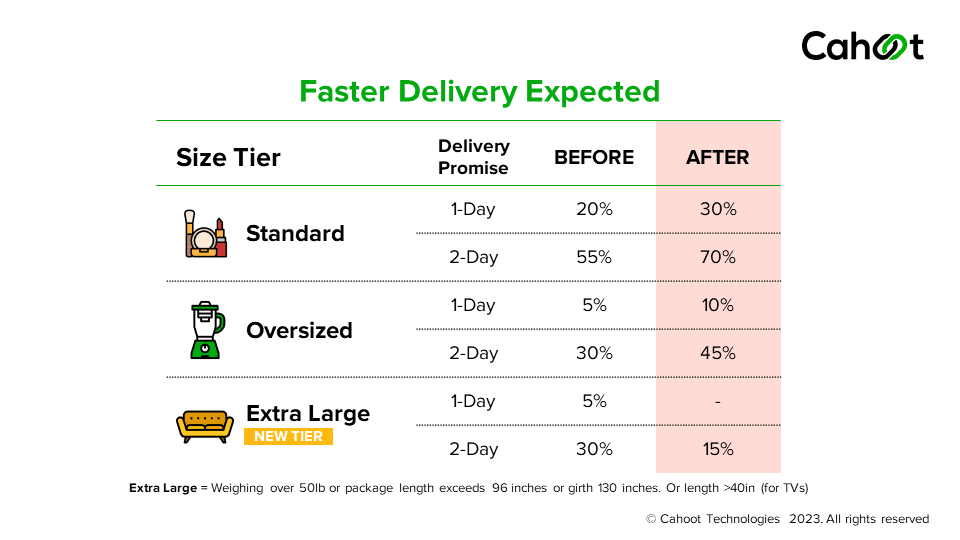
In its latest round of revisions to the program criteria, Amazon has increased the percentage of product detail page views that must promise 1 calendar day and 2 calendar day delivery. Thirty-percent (30%) of product detail page views for standard sized products must promise 1-day delivery, while 70% must promise 2-day delivery. But when does your listing promise 1-day delivery, and when does it promise 2-day delivery? Let’s understand this with a few examples:
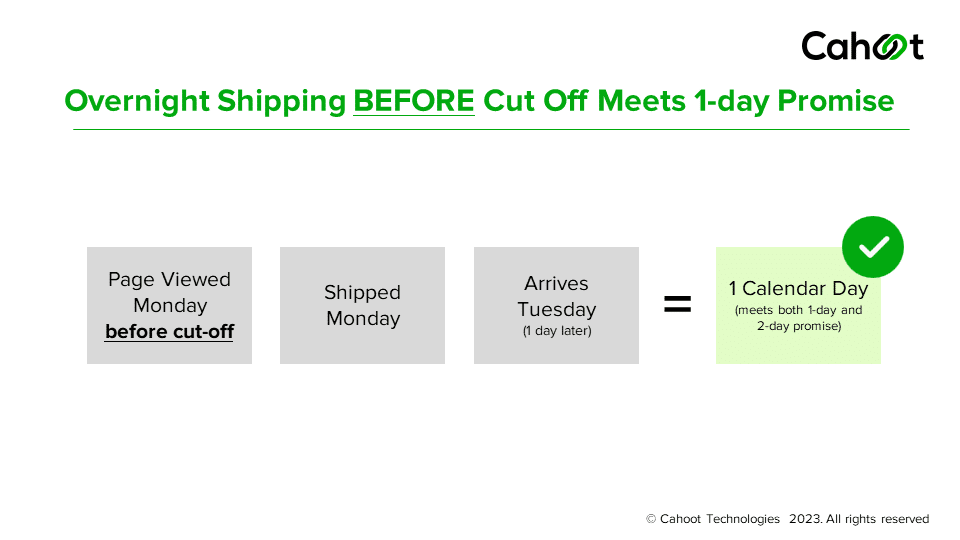
Let’s imagine every order is delivered the very next day after it ships. If a customer views your order on a Monday and places their order before the cutoff time, you will ship it that same day, and it reaches the customer the next day. In this case, Amazon displays a 1-day delivery promise and this page view counts towards your 1-day metrics.
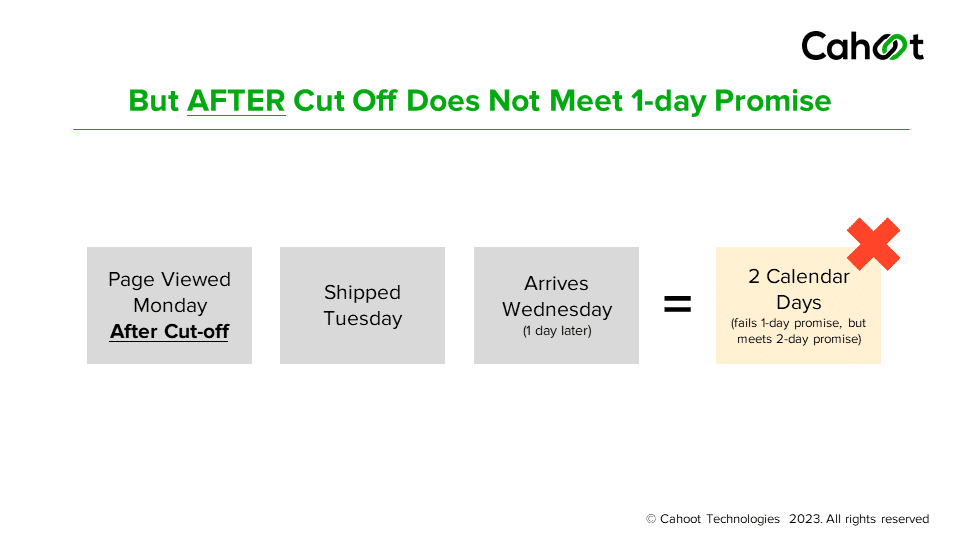
In this second case, when a customer looks at the product detail page after the cutoff time, you ship the order the next day after it is placed, and it reaches the customer the following day. This therefore fails to meet the 1-day promise, but meets the 2-day delivery promise (which means that if a 2-day promise was made after Monday’s order cutoff time, one-day shipping still needs to be used to deliver it in 2 calendar days).
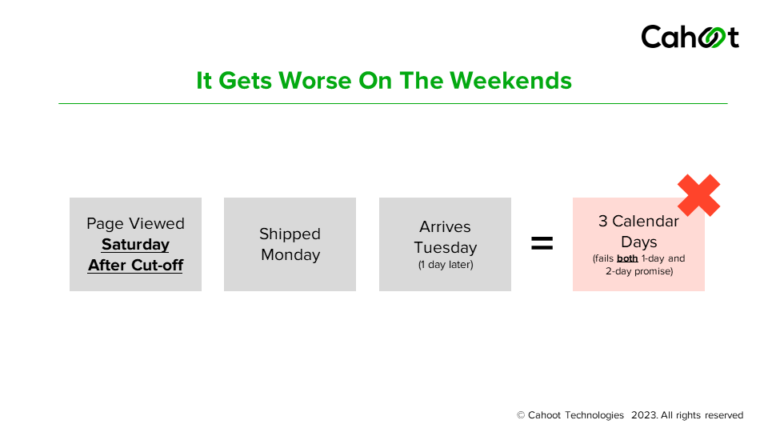
In this last case, it gets really bad. If a customer views your listing on a Saturday evening, the item is expected to ship on Monday (assuming you don’t ship Sundays) and it will be delivered to them on Tuesday – a full 3 days later.
In this case, such a page view counts toward neither the 1-day nor 2-day metrics. The implication is clear – your listings will display 2-day and even 3-day delivery promises for significant periods of time. The mapping between the number of warehouses you have, the percentage of the US population you can service with 1-day delivery, and the % page views that actually promise 1-day delivery is not linear. This graphic illustrates that:
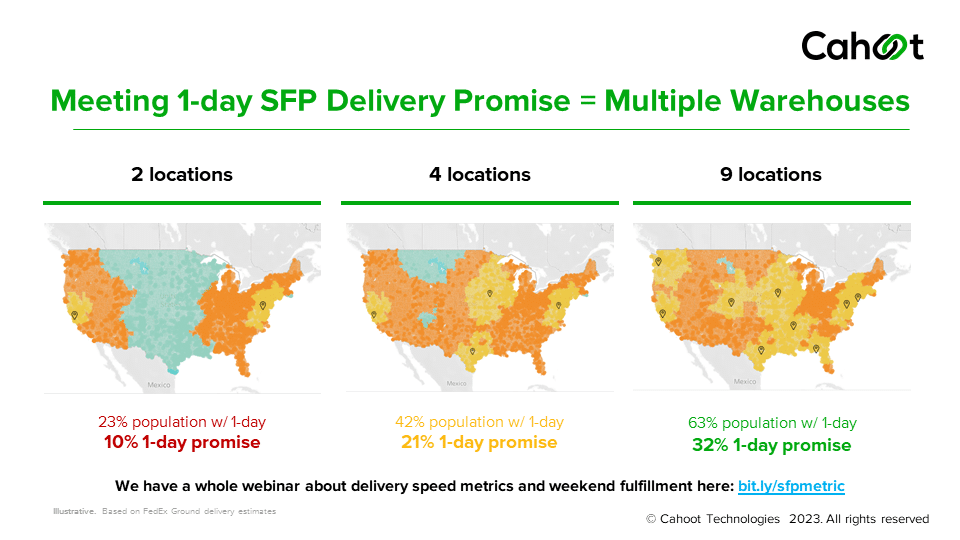
If you have warehouse locations, you can cover 42% of the US population with 1-day delivery. But different customers look at your product detail pages at different times of the day, and see different delivery speed promises. As per our research, in reality, only 21% of page views may actually promise 1 calendar day delivery. To meet the new Seller Fulfilled Prime delivery requirements, it could take as many as six to nine strategically located warehouses. These demanding metrics mean that traditional 3PLs will find it nearly impossible to help Seller Fulfilled Prime merchants (learn more about why traditional 3PLs are failing, and how peer-to-peer order fulfillment networks are designed to help you find success on SFP here). It becomes crucial for merchants to partner with order fulfillment networks that have warehouses at different strategic locations across the country, ensuring customers from anywhere see fast delivery promises. While merchants may want to upgrade to a fulfillment partner who is better positioned to meet these requirements, it’s easier said than done to leave your current 3PL for better alternatives. Many merchants don’t know how to evaluate and find the perfect fulfillment partner for them. If you’re looking for a step-by-step guide on migrating fulfillment partners, check out our guide here!
The Juggling Act Between Cut-off Times, Economical Shipping, and Meeting SLAs
With Seller Fulfilled Prime, a late cut-off time can potentially increase the number of orders your carrier picks up the same day, boosting your 1 and 2-day delivery metrics. If FBA faces any issues or does not meet the delivery promise shown to the customer on the product listing, there are no penalties for Amazon – but a Seller must meet the 93.5% on-time delivery criteria. Here’s a graphic demonstrating how delivery timelines look like when operating with a 2 PM cutoff time (based on our discussion of the page views metric):
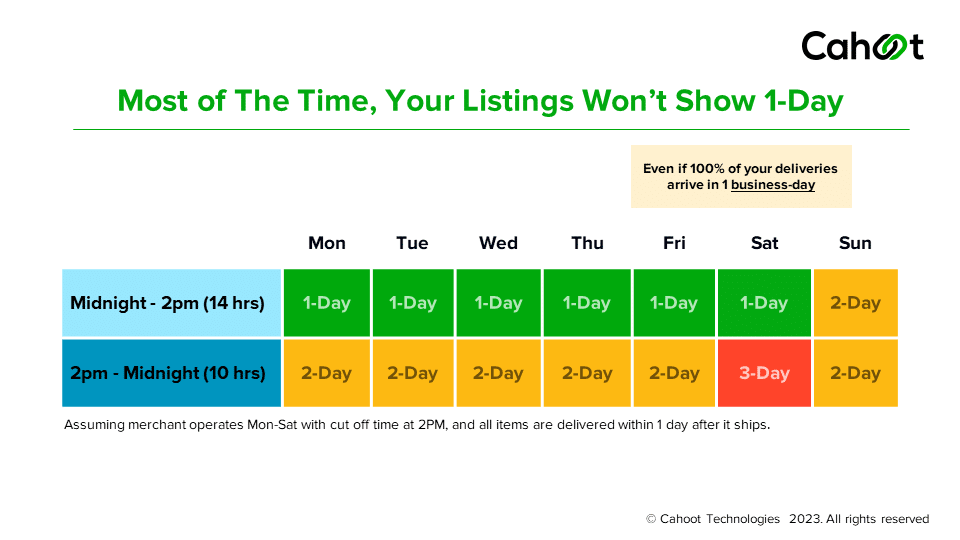
Sellers must carefully make the tradeoff between increasing their cutoff times (if they can schedule a late pickup with their carriers) versus also ensuring that those orders reach the customer the next day. Increasing the cutoff times increases the percentage of page views that promise 1 and 2-day delivery, but you must ensure that you can actually get the product to the customer’s doorstep within the time you’re promising. Here also, Sellers need to strategically place their inventory in a network of warehouses to avoid shipping orders placed close to cut-off times through expensive overnight air shipments. Placing inventory in different strategically located warehouses will enable nationwide coverage through economical ground shipping, all while meeting the customer’s expectations. Pay attention to time zones. A 2PM cutoff time is specific to the local time zone, so an order received before 5PM Eastern Time may need to ship from a western time zone to deliver on time, depending on the delivery promise. This makes it essential that your promotional activities (advertising, marketing) also closely follows the local time zones of the eyeballs you’re trying to reach. But it’s all very doable and Cahoot offers SFP consulting services to help. Reach out if you’d like to talk.
The shift to calendar days has had the most significant impact on the operational side of things – Sellers now have to plan a whole different way of running their business and schedules, which have also become challenges:
Operational Excellence Needed
Challenging to Staff And Operate Warehouses on Weekends
As we’ve mentioned before, staffing is often the biggest bottleneck towards finding success with order fulfillment. With weekend pick up and delivery expected to meet the calendar day-based SLAs, most merchants with a single warehouse or those working with 3PLs face difficulties succeeding in the program. If you own and operate your warehouses, paying your staff to work on the weekends or hiring additional people may eat into your margins to unfeasible extents. Traditional 3PLs, which are asset-heavy, also face cost pressures around labor – which they may be forced to pass onto Sellers. While these options erode any cost savings that Sellers see over FBA, you are not without alternatives – consider platforms like Cahoot, where each of our fulfillment centers is vetted for operational excellence and meets all the challenging requirements.
Arranging for Carrier Pickups on Weekends

In addition to warehousing, your carriers are another critical element in making your logistics work. Not all carriers offer weekend pick up and delivery – some may require you to be a large shipper and maintain minimum order volumes. All this means you may have to contact your account manager at the various carriers and enquire about possible options that may incur additional fees. However, while all this can be done, the biggest reason Sellers shy away from SFP is the heavy amount of process management, collaboration, and busy work needed to keep this operation running.
Managing Weekend Operations Can Overwhelm Sellers
It becomes easier to understand why so many Sellers shy away from Seller Fulfilled Prime – between working with multiple 3PLs to ensure your inventory covers the country, to operating and staffing your warehouses on the weekend as well as coordinating with your shipping carriers to arrange for weekend pickups, it can seem incredibly overwhelming and drain your bandwidth, time, and resources. You might often wonder whether managing so many stakeholders and sifting through so much busy work is worth it when FBA offers you only one party to work with – even if that party is Amazon, whose interests often tend to be misaligned with yours. It does not have to be this way – Sellers must spend time identifying partners who provide a unified experience where they get to work with just one vendor. Platforms like Cahoot help Sellers meet and exceed the SFP program requirement while ensuring you deal with only one company rather than coordinating between multiple 3PLs and carriers, preserving precious time and resources for you and your business.
Scale Faster with the World’s First Peer-to-Peer Fulfillment Network
Tap into a nationwide network of high-performance partner warehouses — expand capacity, cut shipping costs, and reach customers 1–2 days faster.
Explore Fulfillment NetworkUnnecessary Surcharges From Amazon Buy Shipping
In its latest round of revisions, Amazon no longer mandates the use of its Buy Shipping platform to print shipping labels. This is a major relief for Sellers, because Amazon Buy Shipping comes with one major issue that they have reported anecdotally – the platform is not great at estimating the delivery timelines for USPS services (the comment below from Amazon’s Seller Central forums highlights the issue):

In many situations, Buy Shipping does not accurately estimate the delivery timeline within which a USPS service can make orders. In such cases, Sellers are faced with a choice to pick from two bad alternatives: fail to show the customer a fast delivery promise (not an option for SFP Sellers) or buy a more expensive label from the choices that Buy Shipping does believe are capable of meeting the SLA:

This can be tough for Sellers to swallow – as order volumes increase, the extra costs paid on each shipping label begin to mount, eroding margins and profitability. Thankfully, Amazon no longer requires the mandatory use of the service. However, this does not automatically mean that you will see increased savings. You still need to make sure that you’re picking the most economical label on every order! This requires technology like Cahoot’s next generation shipping software, which intelligently rate shops across all carriers and shipping services from all available warehouse locations to always print the cheapest label that will meet the delivery date promised to the customer.
So while a lot can potentially go wrong, Sellers can also make the program work for them and find success by following specific, vital strategies. Start finding success in the SFP program by using the tricks and recommendations in our SFP Cheat Sheet!
“Cahoot is a game-changer. Their fully automatic shipping label creation intelligently assigns the best carrier and shipping service for all my orders across all my channels.”
~ LoveOurPrices.com
Speak to a fulfillment expert
The Cheat Sheet for Winning at Seller Fulfilled Prime
To enable Prime shipping, sellers must adjust their shipping templates and make specific selections in Seller Central and add all the warehouse addresses orders will ship from to support delivery regions for Prime service.
- Achieve Nationwide Coverage With a Warehouse Network: Making orders nationwide in under two days is no easy task. You need to distribute inventory strategically in at least 6 different locations to cover 97%+ of the country in this window. Operating from a single warehouse or one or two 3PL fulfillment centers will simply not cut it – you need to distribute your products across a network to meet the program requirements economically.
- Use Data to Guide Inventory Placement And Avoid Air Shipping: Even with a network model, it is crucial to analyze where most of your orders are coming from – placing your inventory close to those “order hubs” becomes a vital part of ensuring you will meet and exceed the one and two-day delivery requirements. This also ensures that you can reach all of your customers through economical ground shipping rather than being forced to make too many expensive air shipments.
- Consolidate Relationships And Eliminate Busywork: SFP can lead you down the rabbit hole of investing in multiple 3PLs and coordinating with numerous carriers to make the program work for you. Sellers need to conduct research and identify a platform that provides a single relationship for you to manage – otherwise, logistics can overtake your focus on the activities that matter – selling and taking care of your customers.
- Save Every Dollar Across Every Shipment: The whole point of moving away from FBA towards a program like SFP is to extract cost savings. It is essential to align your technology towards automation, whereby you’re automatically generating the lowest price shipping labels on every single order.
- Monitor Metrics Like a Hawk: Amazon provides you with dashboards on Seller Central that provide all the SFP metrics needed. It is crucial to constantly stay on top of these and keep adjusting your strategy to ensure you’re meeting expectations.
- Appeals Process: You get 14 calendar days from notice to file, 4 days to respond to Amazon’s follow-up, and are limited to 3 appeals per quarter (successful appeals don’t count against your quota). Each appeal must include order IDs, scans, zip codes, and proof of any carrier delays.
Succeeding in this program is challenging, but we think these tips are a great place to start. As Q4 and the holiday season approach, now is the time for Sellers looking to diversify their order fulfillment beyond FBA and offer fast, profitable free shipping across every SKU to identify a partner who can help you win at Amazon Seller Fulfilled Prime. If you’d like to understand how Cahoot can be with you every step of the way, just fill out this form, and we’ll be in touch!
Frequently Asked Questions
What is Seller Fulfilled Prime on Amazon?
Seller Fulfilled Prime allows you to list your products as Prime-eligible and handle the fulfillment yourself.
What is the difference between seller-fulfilled and Amazon fulfilled?
Logistics. Within the framework of Fulfillment by Amazon (FBA), the platform handles the entire logistics process – from product storage in warehouses to dispatching. Seller Fulfilled Prime (SFP) leaves you 100% in charge of everything in this regard, yet forces you to cover dispatch fees at your own cost.
How do you pre qualify for the Seller Fulfilled Prime trial?
To pre-qualify for the Seller Fulfilled Prime trial you must meet the following criteria over the past 90 days: Self-fulfilled at least 100 packages, Cancellation rate less than 2.5%, Valid tracking rate greater than 95%.
What is the difference between SFP and FBA?
FBA offers scalability and customer trust but comes with higher costs and limited control. FBM provides cost savings and customization options but requires more time and effort. SFP combines Prime eligibility with control over costs but has stricter requirements and operational challenges.
Is Seller Fulfilled Prime worth it?
In reality, it’s more of a trade-off. Seller fulfilled Prime offers the advantage of the Prime Badge and lower fees than FBA, but Amazon also levies stricter, potentially more costly requirements than FBM. But SFP orders can command higher prices (15 – 20%) and allow for more control. With a well-managed program, it can be quite beneficial.

Turn Returns Into New Revenue

Related Blog Posts
Seller Fulfilled Prime (SFP) & Premium Shipping Requirements Are Changing June 29, 2025: A Side-by-Side Deep Dive
In this article
 7 minutes
7 minutes
- Trial Enrollment & Graduation Windows for Seller Fulfilled Prime
- Monthly Volume & Enrollment Requirements
- Size-Tier Misclassification & Network Disruptions
- Appeals Process Overhaul
- OTDR Protection via Amazon-Managed Shipping Tools
- Premium Shipping Changes
- Putting It All Together: A Seller’s Checklist
- Final Thoughts
Starting June 29, 2025, Amazon is rolling out tighter performance guardrails for two of its marquee shipping programs: Seller Fulfilled Prime (SFP) and Premium Shipping. Seller Fulfilled Prime work refers to the process by which eligible third-party Sellers can fulfill Prime orders directly from their own warehouses, provided they meet Amazon’s strict performance requirements. For Sellers, these changes aren’t mere tweaks; they reshape how you qualify, stay in, and recover from hiccups in these programs. Below, we’ll walk through each key requirement as it stands today versus what you’ll need to hit after the effective date, with real-world examples to illustrate exactly what’s at stake. For a rundown of all program requirements, see the full Seller Fulfilled Prime Program and Premium Shipping policies.
Trial Enrollment & Graduation Windows for Seller Fulfilled Prime
Today:
- You can request a 30-day SFP trial any time.
- The SFP trial period lasts for 30 days and includes specific performance metrics that must be achieved to qualify for official enrollment in the program.
- Graduation from trial depends solely on meeting performance metrics during those 30 days.
After June 29:
- Three Trials Max per Year: You’ll be capped at 3 trial attempts in each calendar year. Any trial that begins before June 29, 2025 doesn’t count toward this limit.
- Quiet Periods Around Major Events: If your 30-day trial spans the 30 days leading up to Prime Days, Black Friday through Christmas, etc., you cannot graduate. This ensures Sellers are battle-tested before the busiest season.
Sellers must successfully complete the trial period by meeting specific performance requirements to gain access to Prime branding.
Why This Matters: Imagine you enroll in an SFP trial mid-October, aiming to graduate in time for Black Friday. Under the new rule, even flawless performance won’t earn you Prime status, you’ll have to re-enroll after the holidays. Plan your trials for quieter times (e.g., late January) to avoid losing a precious attempt.
Slash Your Fulfillment Costs by Up to 30%
Cut shipping expenses by 30% and boost profit with Cahoot's AI-optimized fulfillment services and modern tech —no overheads and no humans required!
I'm Interested in Saving Time and MoneyMonthly Volume & Enrollment Requirements
Today:
- There’s no fixed minimum monthly SFP volume.
- If you miss on-time metrics, Amazon sends warning emails, but your enrollment status remains until metrics severely degrade.
After June 29:
- Minimum 100 SFP Shipments/Month: You must deliver at least 100 Prime-eligible packages each calendar month, spread reasonably across weeks, to maintain the Prime badge.
- Dynamic Order Limits: Fall below 100 (or cluster all shipments in one week), and Amazon will impose a reduced daily Prime order limit until you return to consistent volume.
- Exemption for Fix-Ups: If you get a second warning for missing any metric, you can pause Prime (no shipments) for a week to get your house in order, and that period won’t count against your enrollment.
Practical Example: You shipped 15 Prime packages in the first 3 weeks of May, then scrambled to ship 90+ in the final week. In June, you’ll wake up to find your Prime orders capped at a fraction of normal volume. Better to target 25–30 SFP orders per week and build in some slack.
Size-Tier Misclassification & Network Disruptions
Today:
- Listing ASINs in the wrong size tier might trigger warning emails, but rarely leads to immediate suspension. Misclassification can also result in higher storage fees, impacting overall profitability.
- Late deliveries during huge storms or carrier outages may or may not be excluded automatically.
After June 29:
- Strict Misclassification Guardrails: Repeatedly offering a product under the wrong size-tier can lead to blocking of SFP offers or Prime status suspension/revocation for those ASINs.
- Automatic OTDR Exclusions for Major Disruptions: Clearer language confirms that any late deliveries from Amazon-identified large-scale carrier or weather events are excluded from your OTDR automatically.
Scenario: You classify a product as having larger dimensions to qualify for the less strict performance requirements that apply to a larger size tier. After three such mistakes, Amazon silently blocks Prime on that ASIN. You’ll need to correct the tier and appeal to restore it—costly downtime.
Appeals Process Overhaul
Today:
- You have a sliding window to dispute removals, but timelines and submission limits are vague.
After June 29:
- 14-Day Filing Window: From the date you receive a notice (e.g., “Your SFP status is paused due to low OTDR”), you have 14 calendar days to open an appeal.
- 4-Day Response to Requests: If Amazon asks for more details, you have 4 days to reply, or your appeal is closed.
- Limit of 3 Appeals/Quarter: You can file up to 3 appeals per quarter (overturned appeals don’t count). Appeals require supporting data (order IDs, tracking numbers, ZIP codes, proof of carrier delays).
Why It’s Tougher: Say your OTDR dips because a regional carrier hub froze over two days. You’ll need to create a case including tracking scans, carrier advisories, and order logs quickly, or forfeit that appeal.
Looking for a New 3PL? Start with this Free RFP Template
Cut weeks off your selection process. Avoid pitfalls. Get the only 3PL RFP checklist built for ecommerce brands, absolutely free.
Get My Free 3PL RFPOTDR Protection via Amazon-Managed Shipping Tools
Today:
- If you use Amazon Buy Shipping and meet delivery cut-offs, late deliveries often still count against you unless you separately request exclusions.
After June 29:
- “OTDR Protected” Labels: If you enable Shipping Settings Automation in your Prime templates and purchase “OTDR Protected” labels through Amazon Buy Shipping, any late deliveries on Standard (for SFP) or Premium shipping won’t hurt your OTDR.
- Continued Exclusion of Major Disruptions: Same carve-out for large-scale network events.
Bottom Line: Automate shipping profiles and purchase labels using Buy Shipping API, and you effectively get “insurance” against minor late-delivery slips.
Premium Shipping Changes
Amazon’s Premium Shipping program (items promised in 1–3 business days) gets its own tightening:
|
Requirement
|
Today
|
After June 29
|
|---|---|---|
|
OTDR Threshold
|
97%
|
93.5%
|
|
Measurement Window
|
Rolling 30-day period
|
Weekly (Sun–Sat)
|
|
Enforcement Steps
|
Removal upon sustained dip
|
3-strike system:
1st miss – warning email 2nd miss – warning email 3rd miss in 4 consecutive weeks – removal |
|
Warning Reset
|
None
|
4 consecutive perfect weeks clears prior infraction
|
Key Impact: Under the new cadence, a single bad week can put you on notice, and three such weeks in a month spells immediate removal from Premium Shipping. You’ll need more consistent performance throughout each month, not just a healthy 30-day aggregate. Sellers must successfully complete the new performance metrics to maintain their status in the Premium Shipping program.
Scale Faster with the World’s First Peer-to-Peer Fulfillment Network
Tap into a nationwide network of high-performance partner warehouses — expand capacity, cut shipping costs, and reach customers 1–2 days faster.
Explore Fulfillment NetworkPutting It All Together: A Seller’s Checklist
- Schedule Your SFP Trial Smartly: Avoid major sale seasons; plan for Q1.
- Lock Down 100+ Prime Shipments/Month: Automate your SFP orders to spread volume evenly across weeks.
- Clean Up Your ASIN Tiering: Audit listings for correct size tiers and package profiles.
- Enable Shipping Automation + Protected Labels: In Seller Central > Fulfillment Settings, turn on SFP/Premium templates and default to OTDR-protected labels.
- Monitor Weekly OTDR: Invest in an operations dashboard that can track your OTDR by week for both SFP and Premium orders.
- Prepare an Appeals Kit: Create a template for submitting an appeal with sections for order logs, tracking scans, and carrier advisories so you can file within 14 days. Cases created after 14 calendar days will not be considered.
- Build in Buffer for Disruptions: If a regional snowstorm hits, pre-notify Amazon to be considered for exemption from performance defects proactively. Consider outsourcing your SFP fulfillment to a distributed fulfillment network that organically solves for carrier network disruptions and ensures the highest performance metrics for continued program eligibility and enrollment.
- Understand SFP Program Requirements: Familiarize yourself with the stringent requirements of the SFP program and adapt to changing Amazon policies to maintain your SFP status.
Final Thoughts
These new Seller Fulfilled Prime (SFP) and Premium Shipping requirements underscore Amazon’s push for ultra-reliable, ultra-consistent delivery, a win for customers, and a heavier lift for Sellers. But by meeting these new standards, (whether independently or with the help of a distributed fulfillment network), Sellers can maintain access to Prime branding and the substantial customer base of Amazon Prime members, mitigating the risk to the sales opportunities afforded by the Amazon Seller Fulfilled Prime Program.
By understanding the before-and-after, planning trial timing, automating wherever possible (especially Prime shipping options), and building a rapid-response appeals process, you can not only stay enrolled in SFP and Premium Shipping programs but thrive in them.
Watch the Video

Turn Returns Into New Revenue


